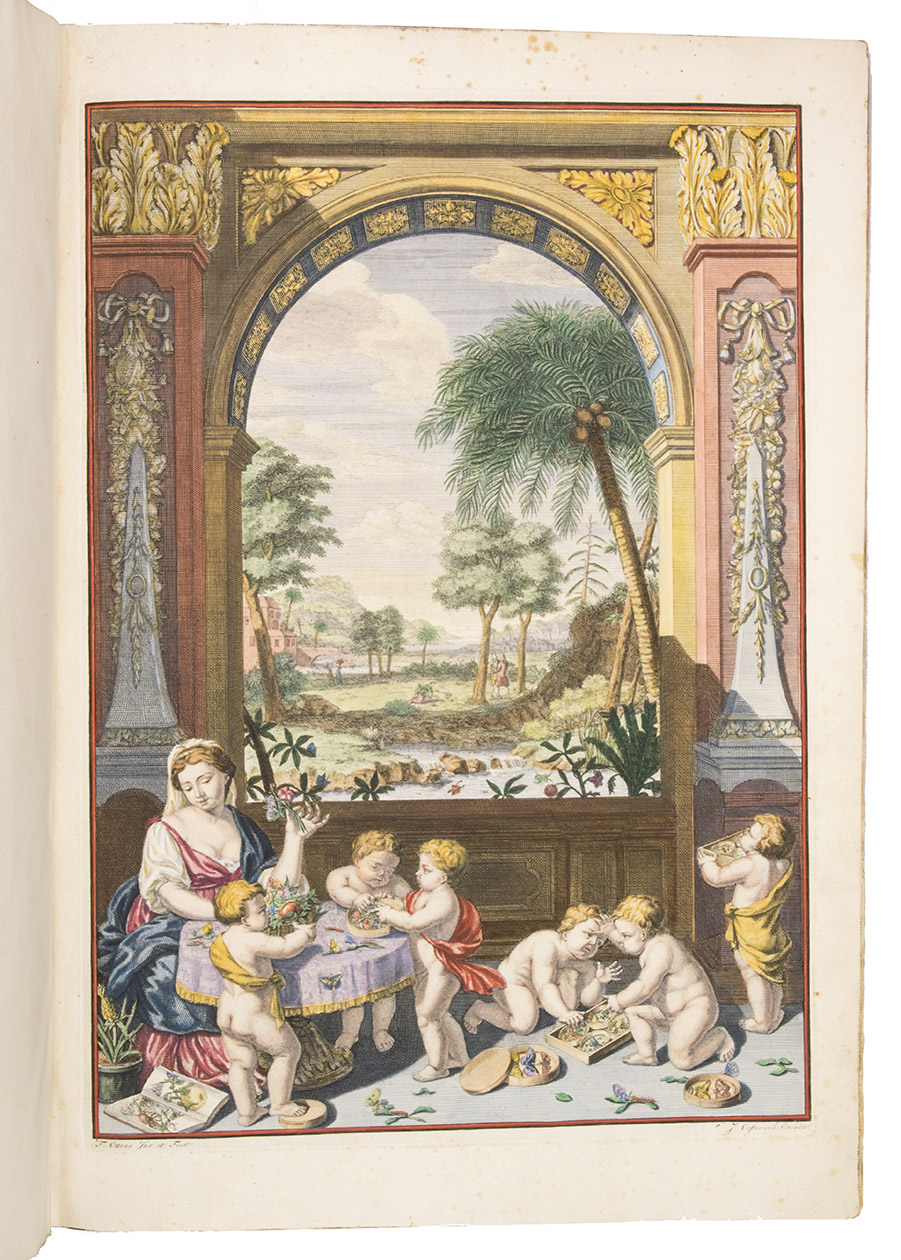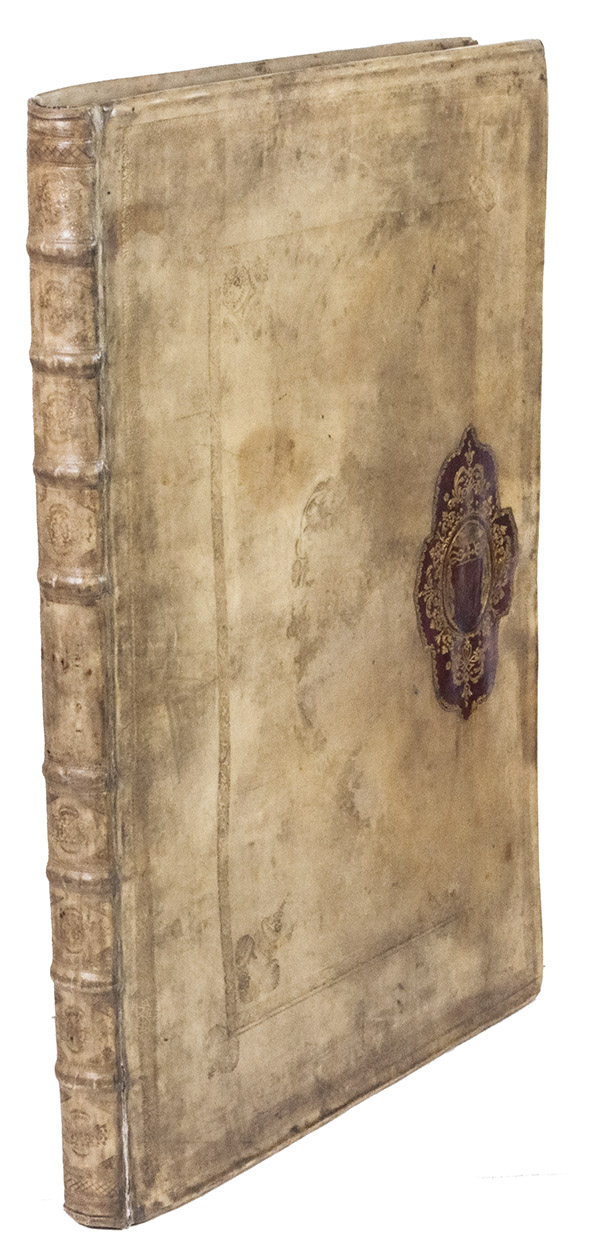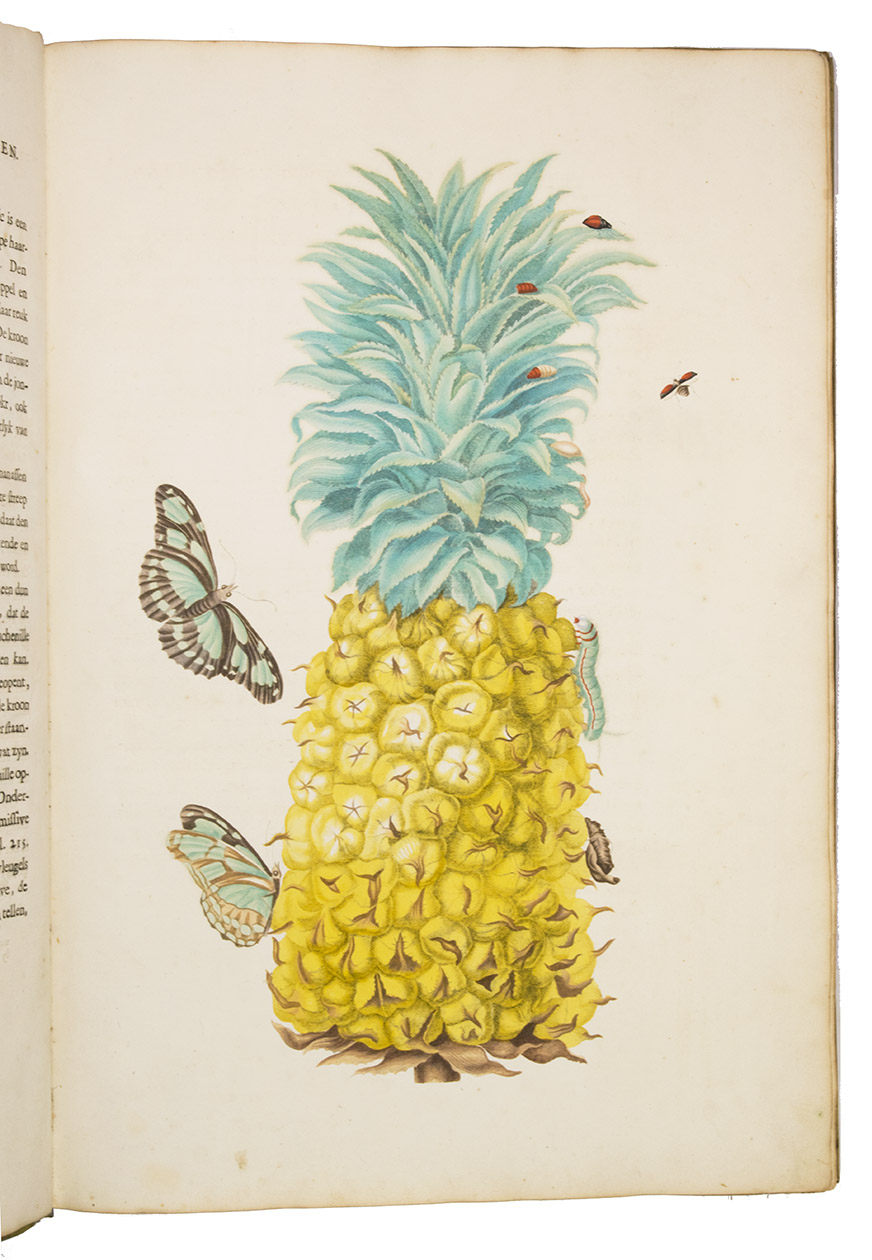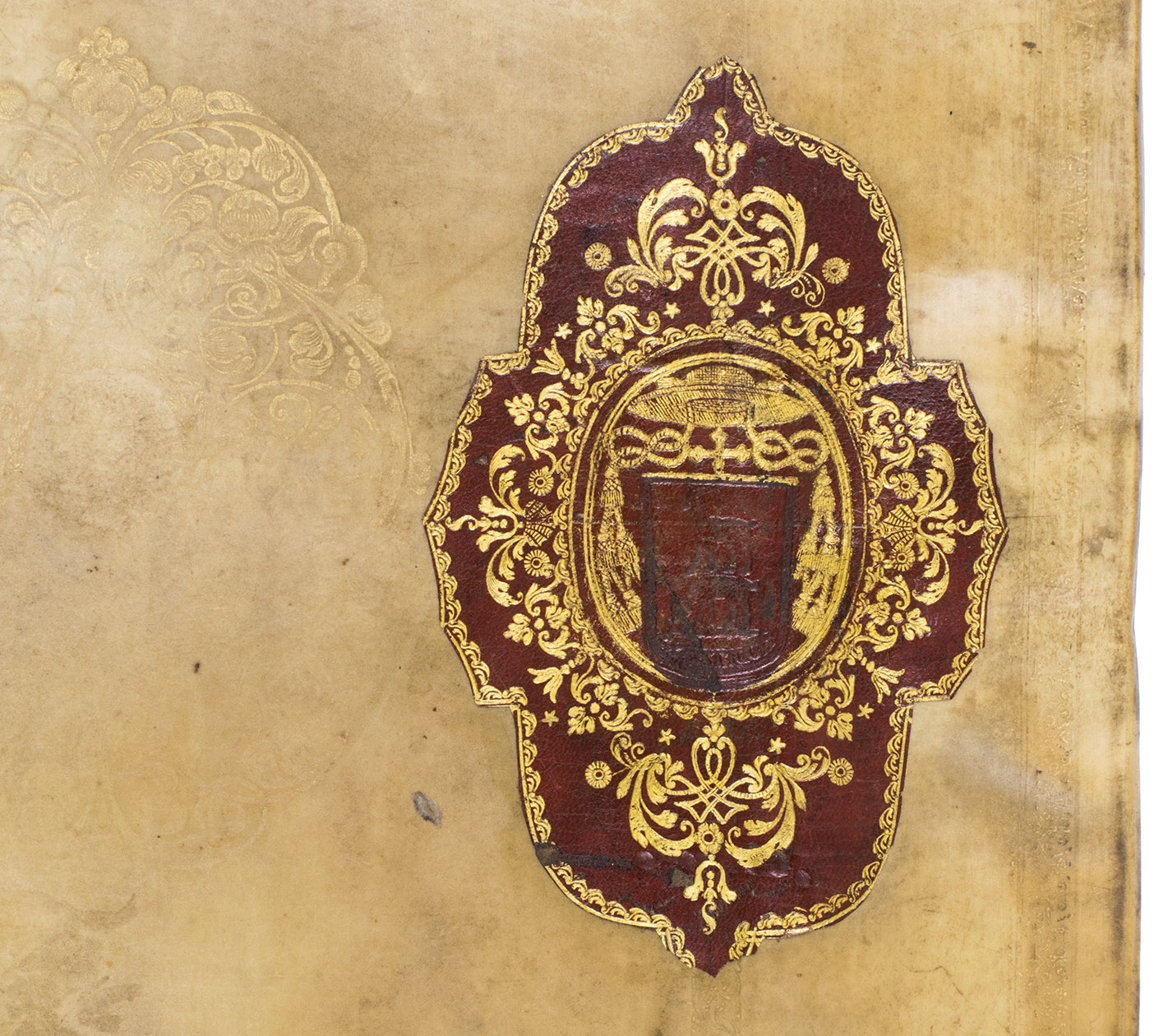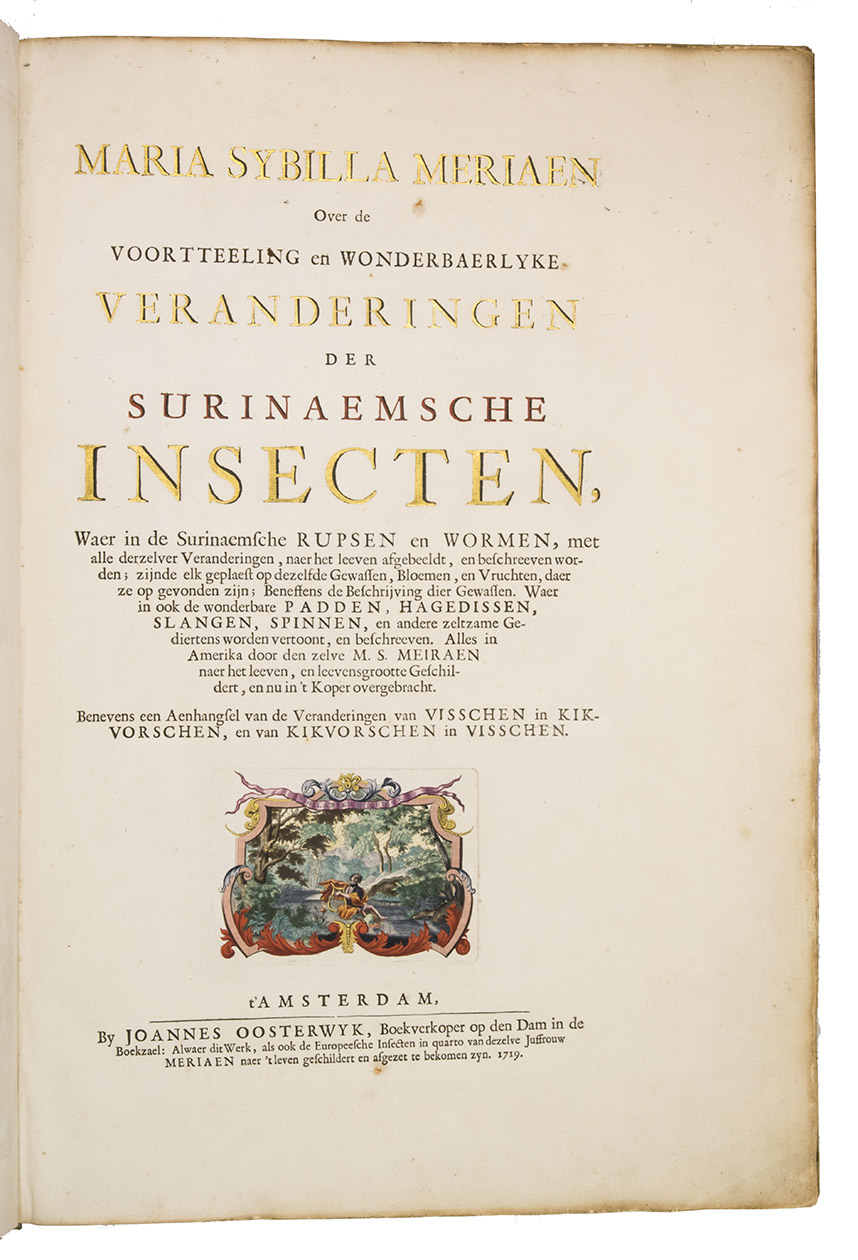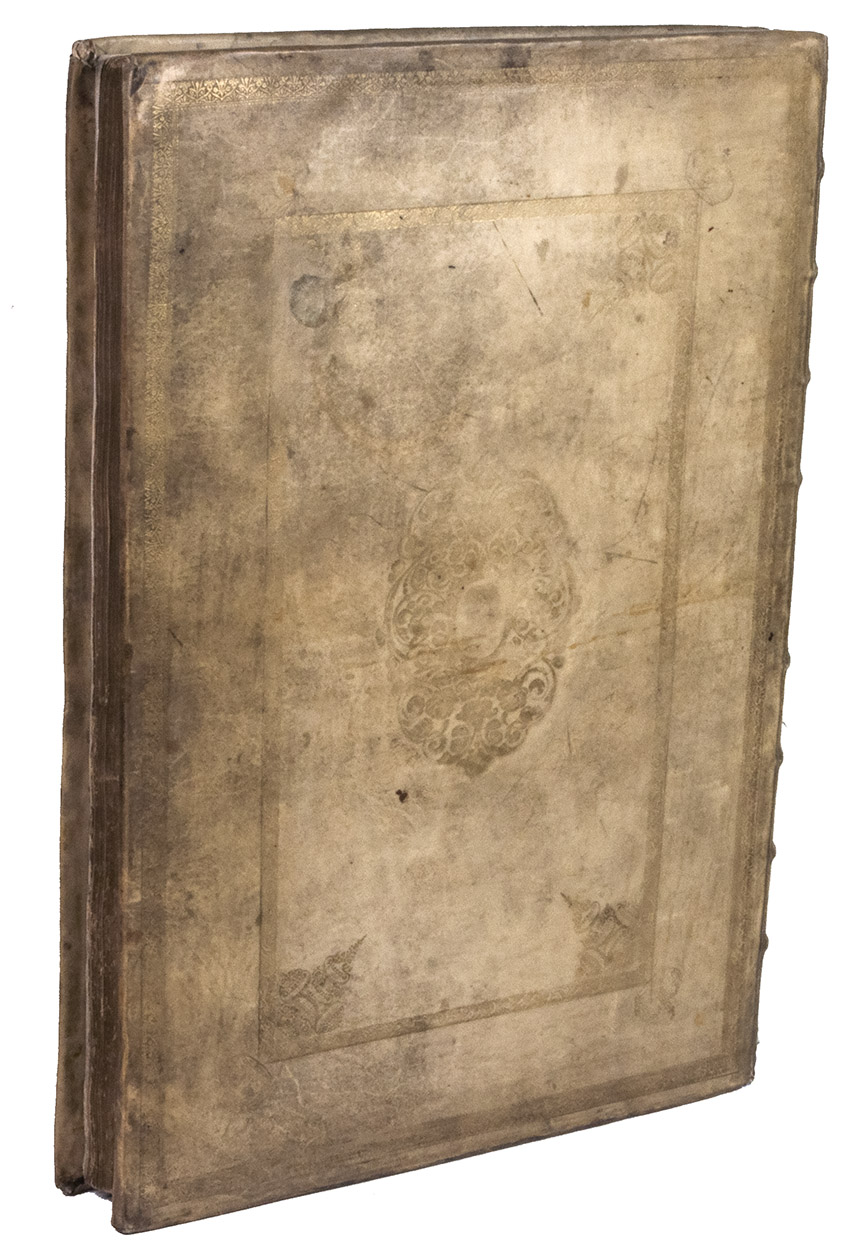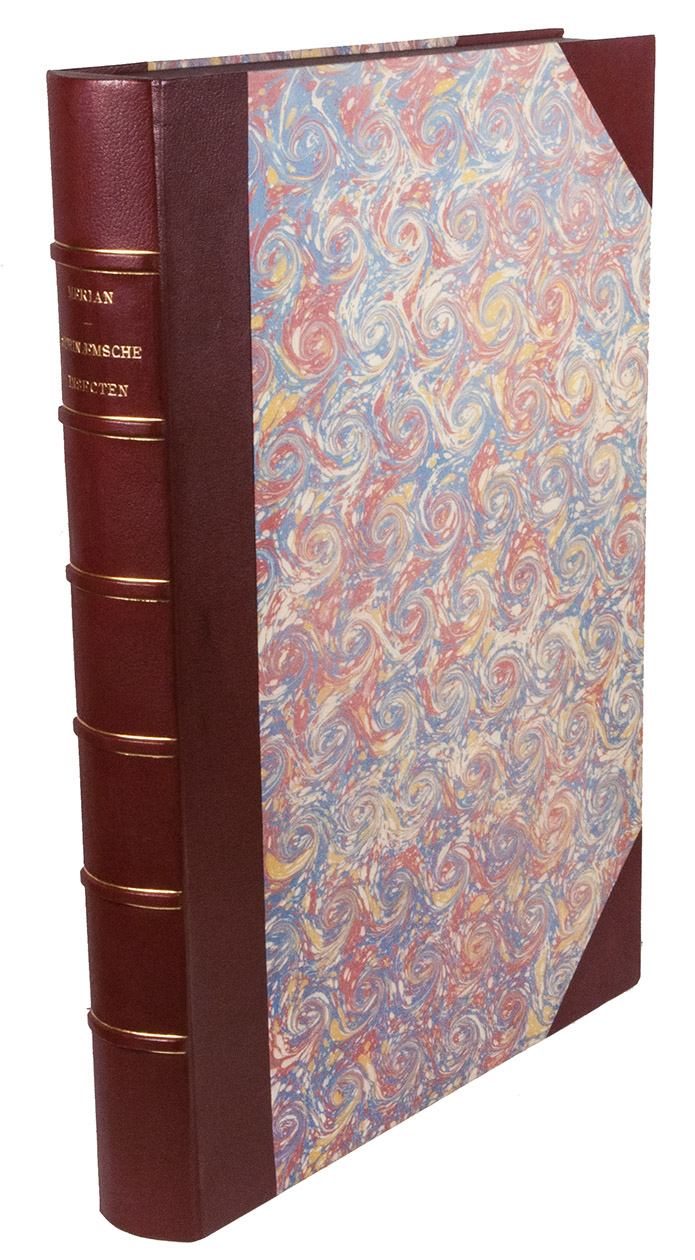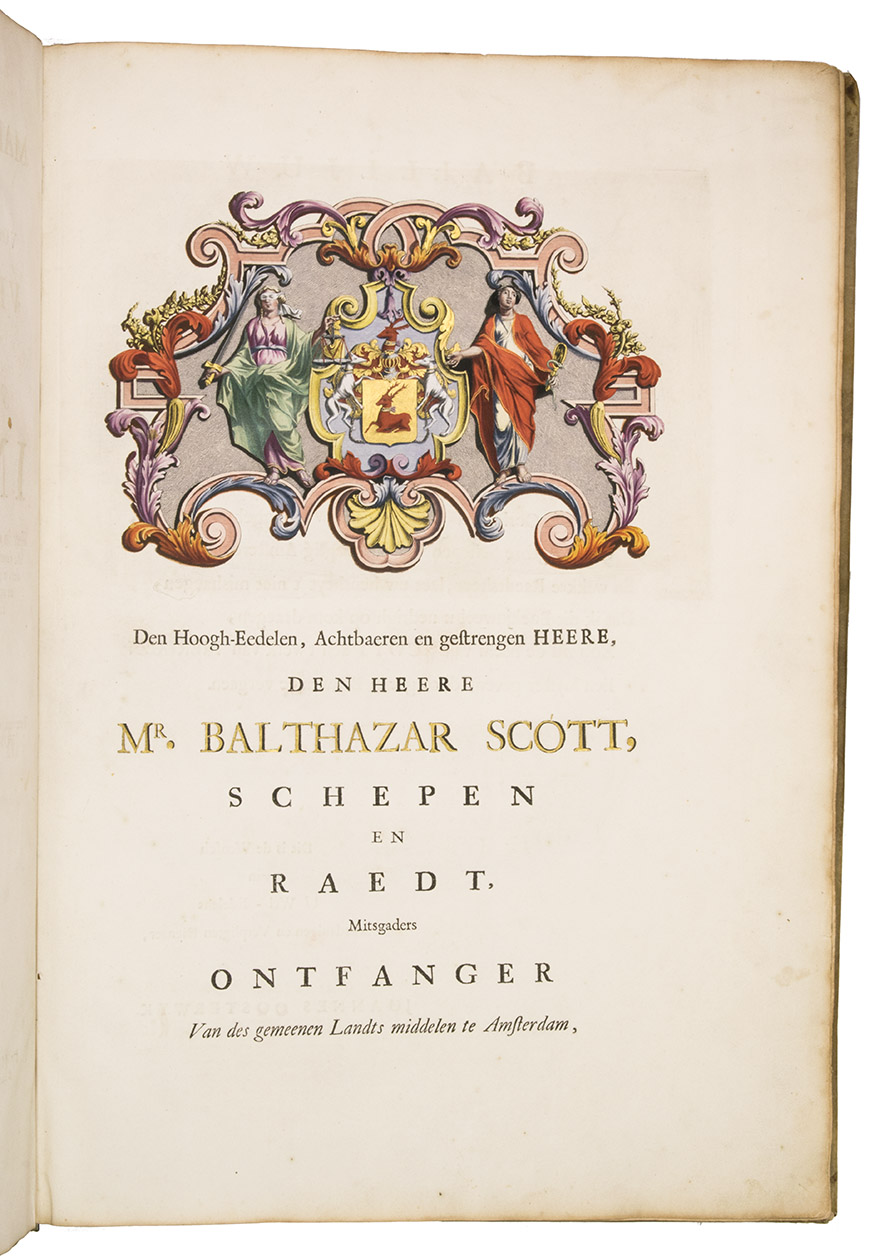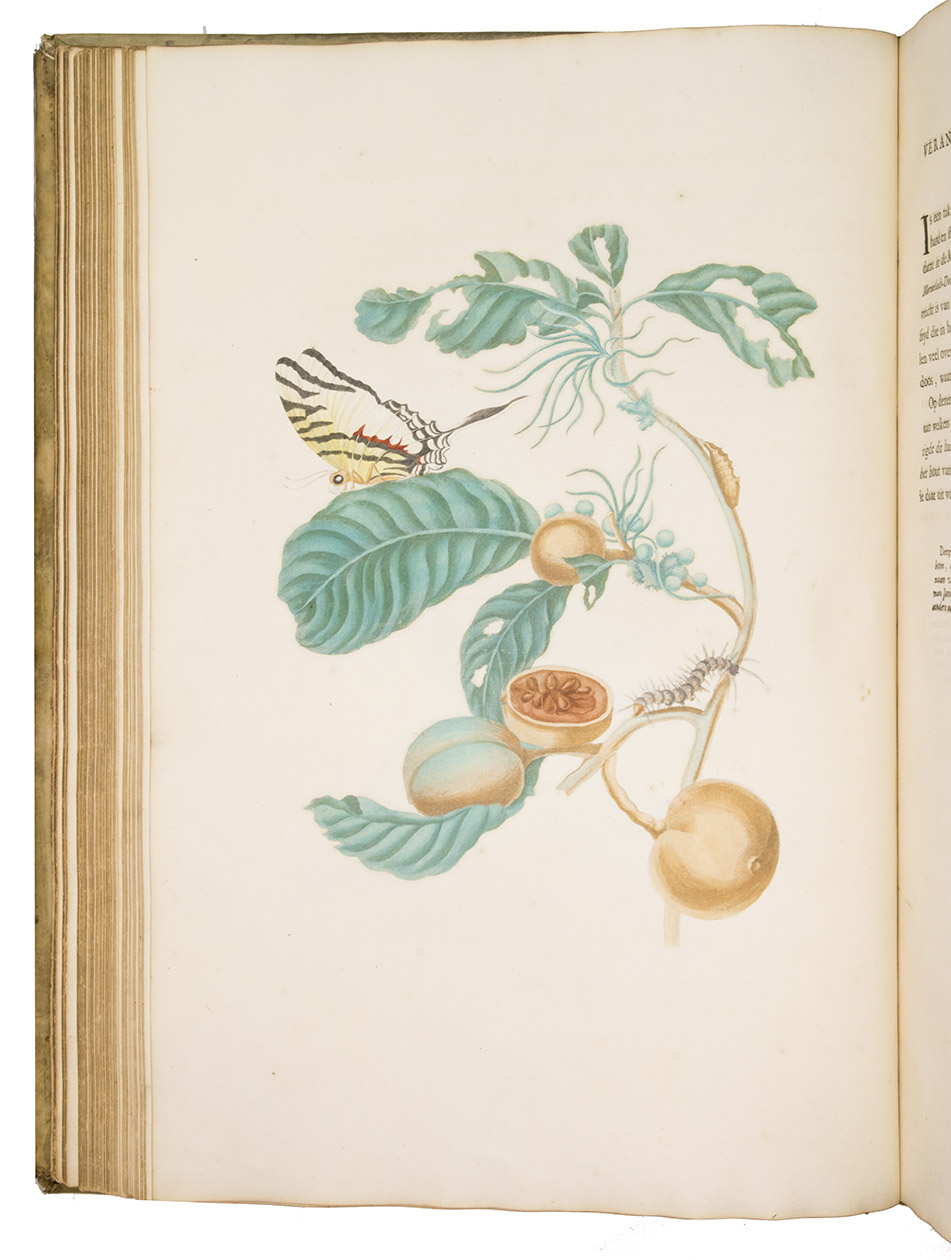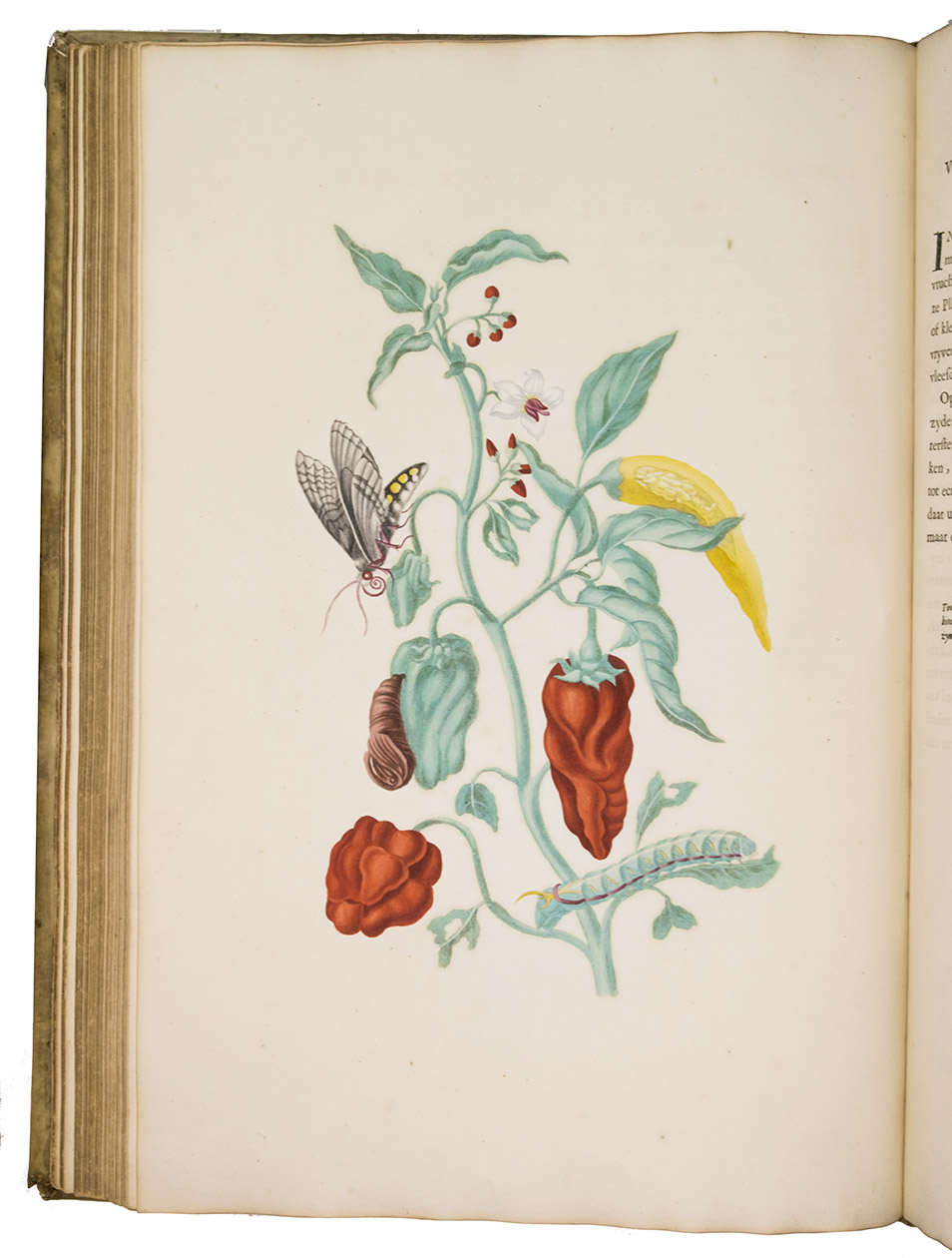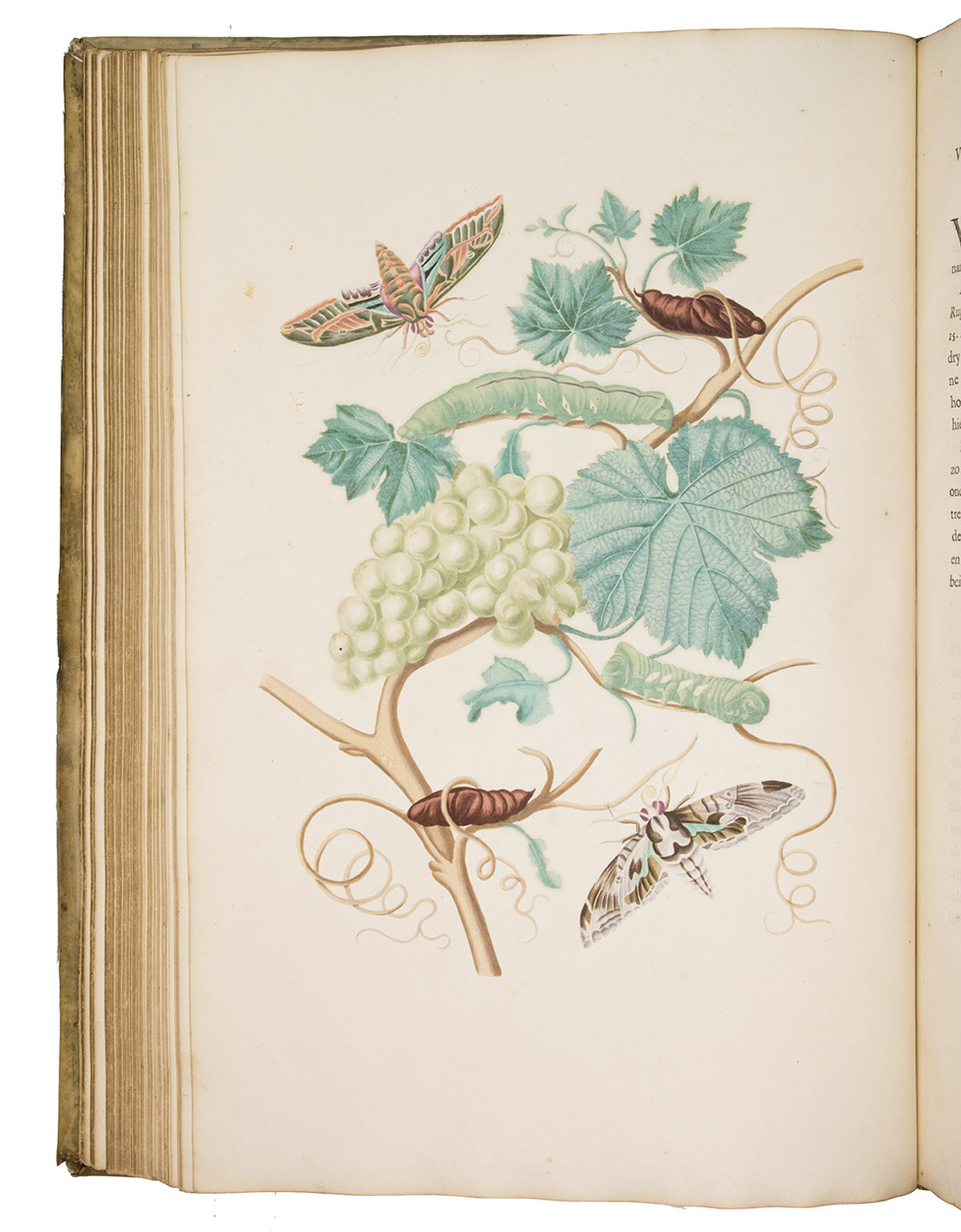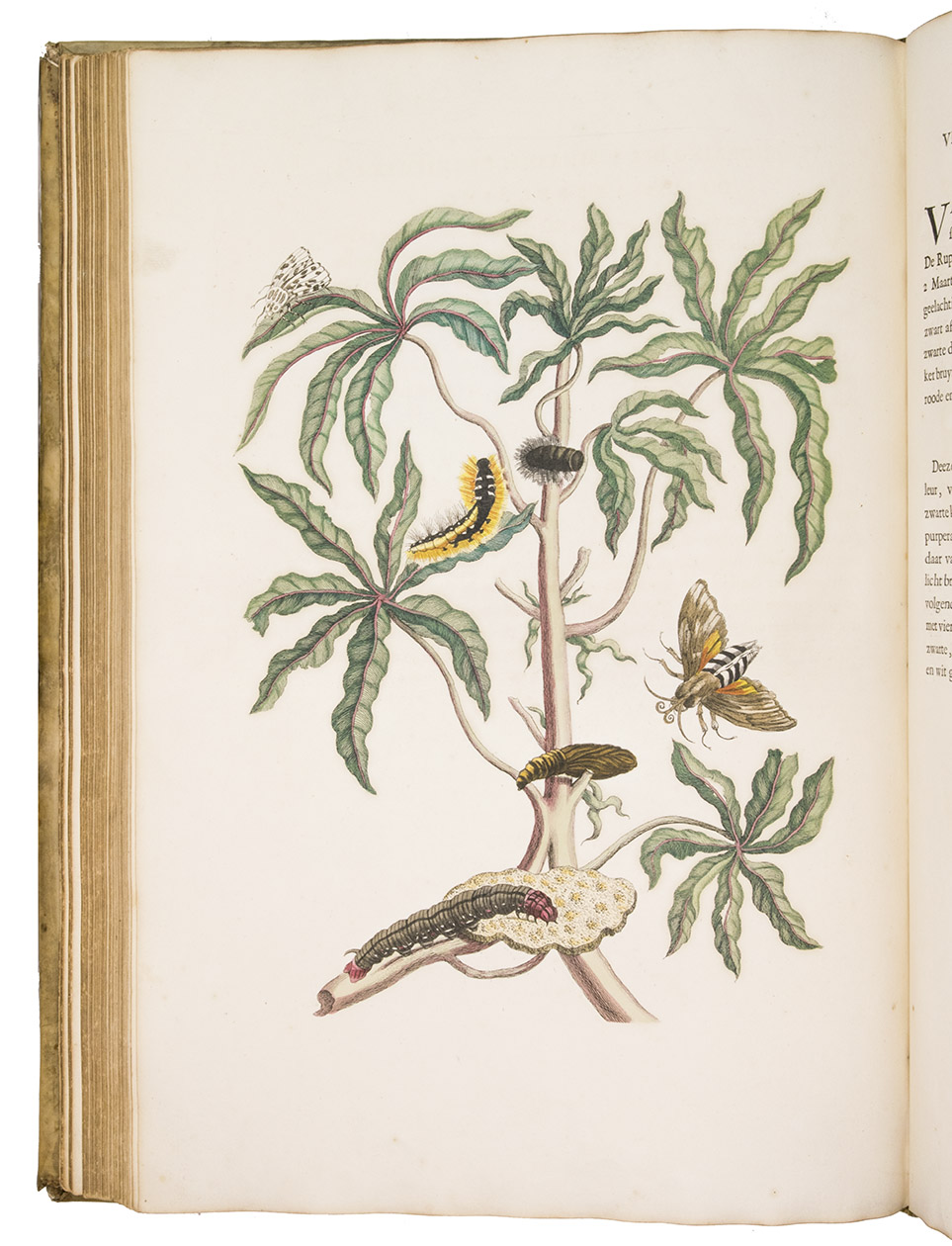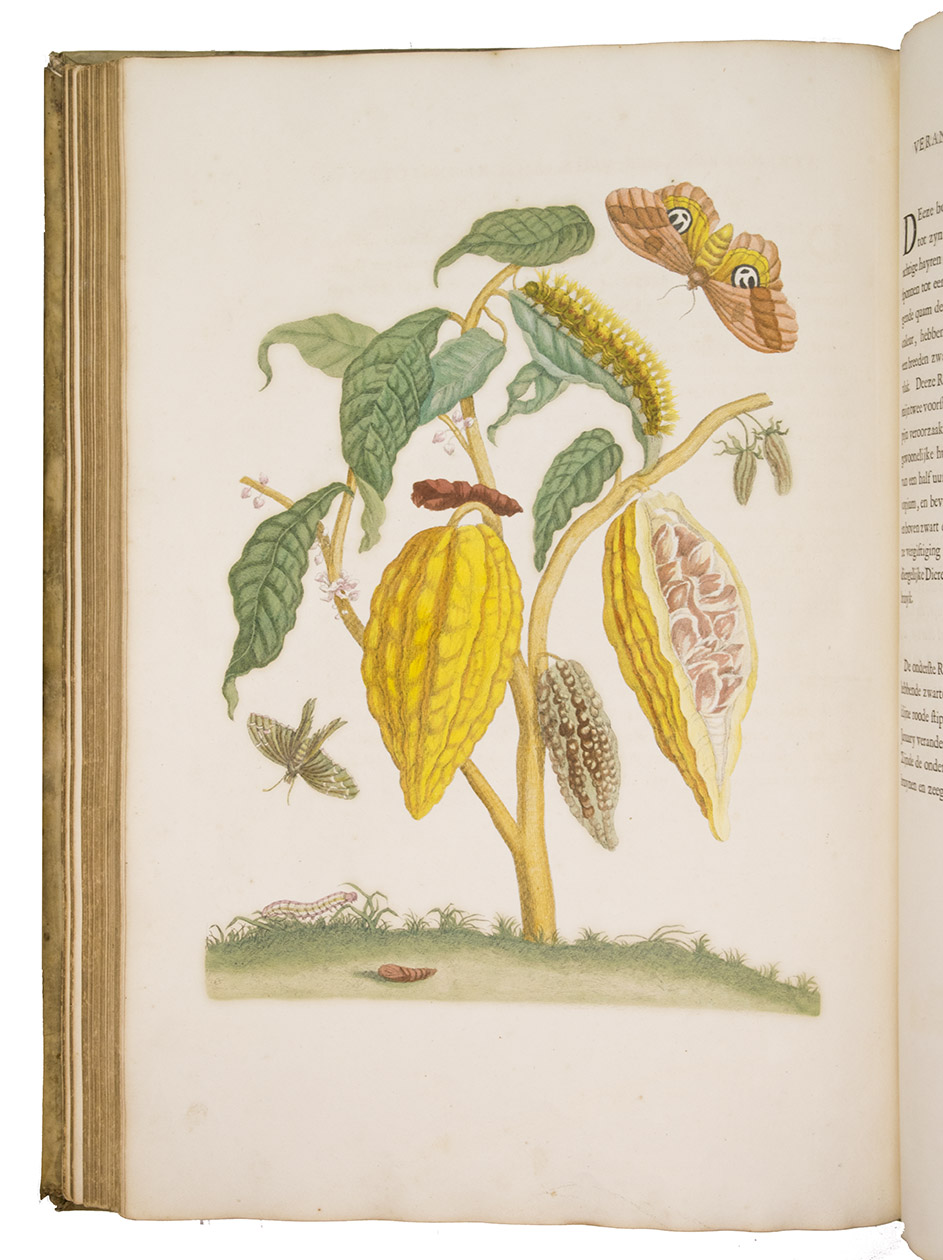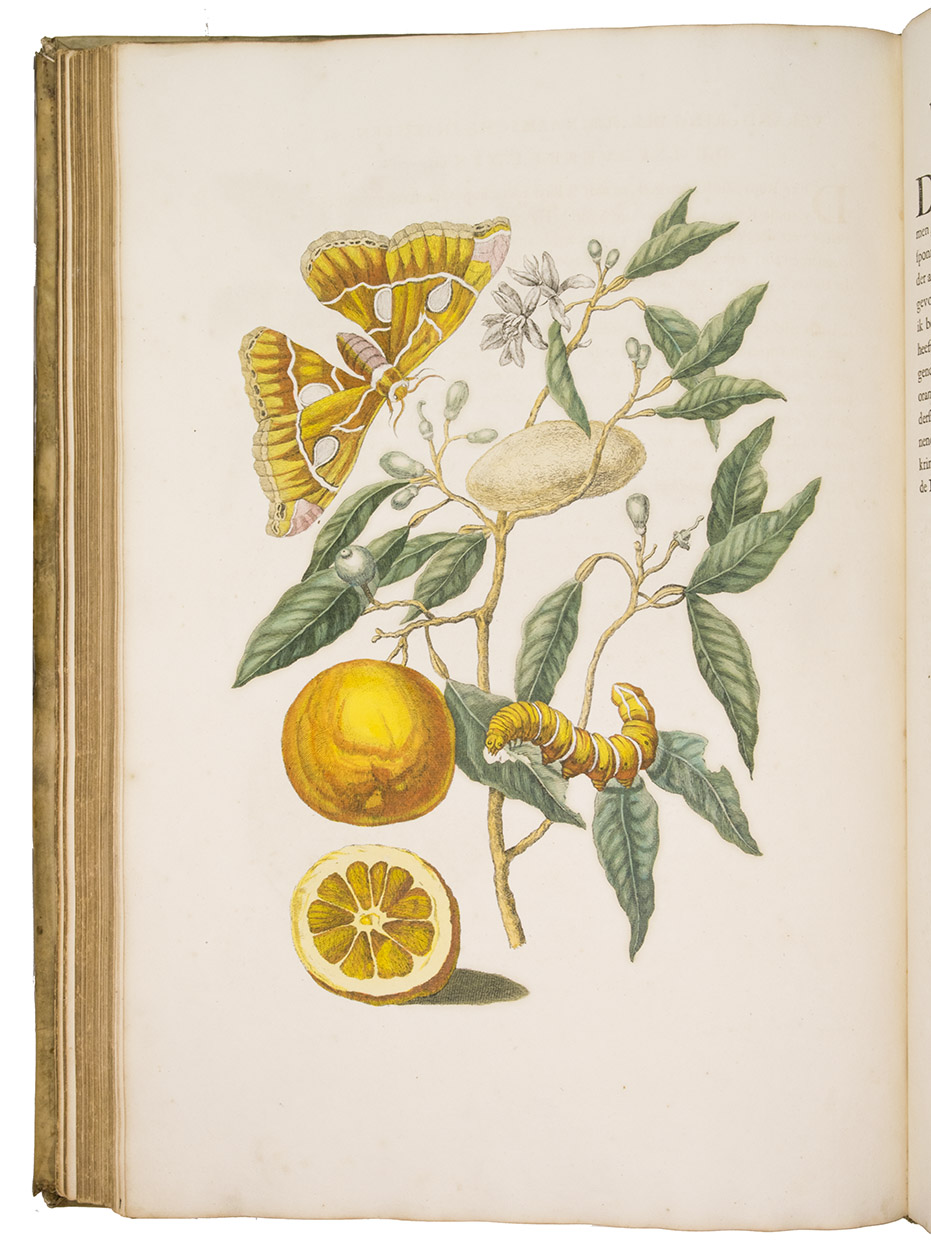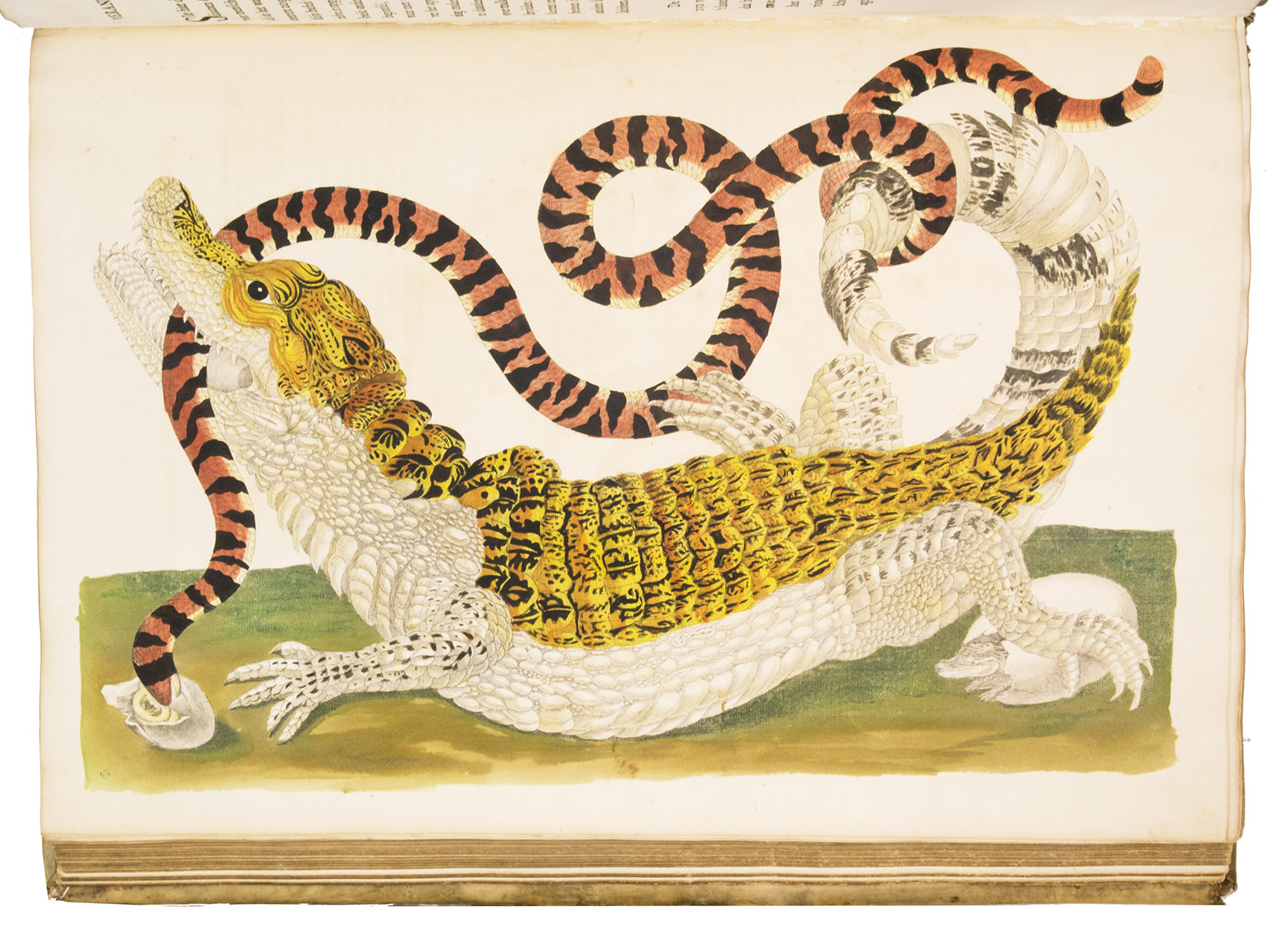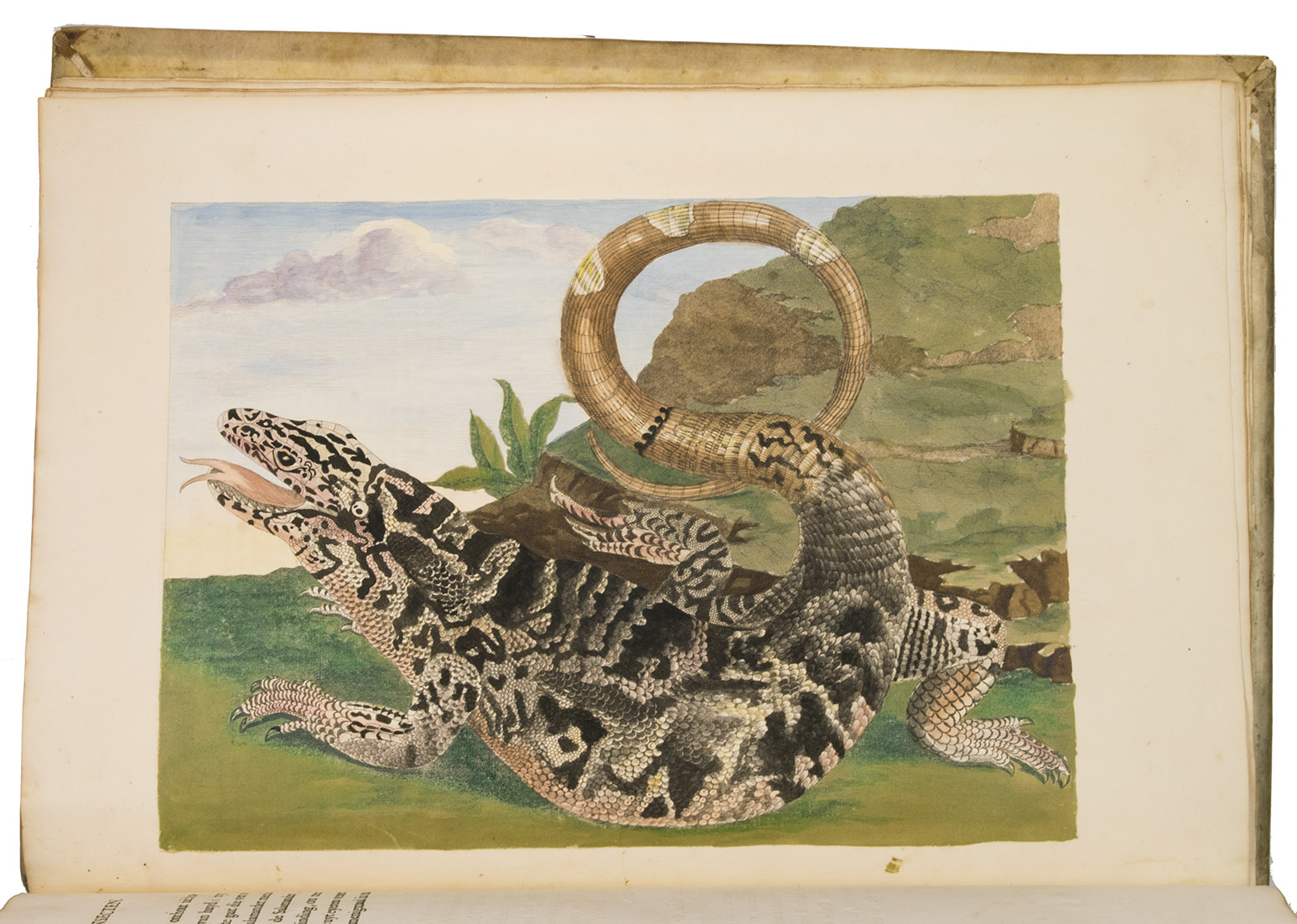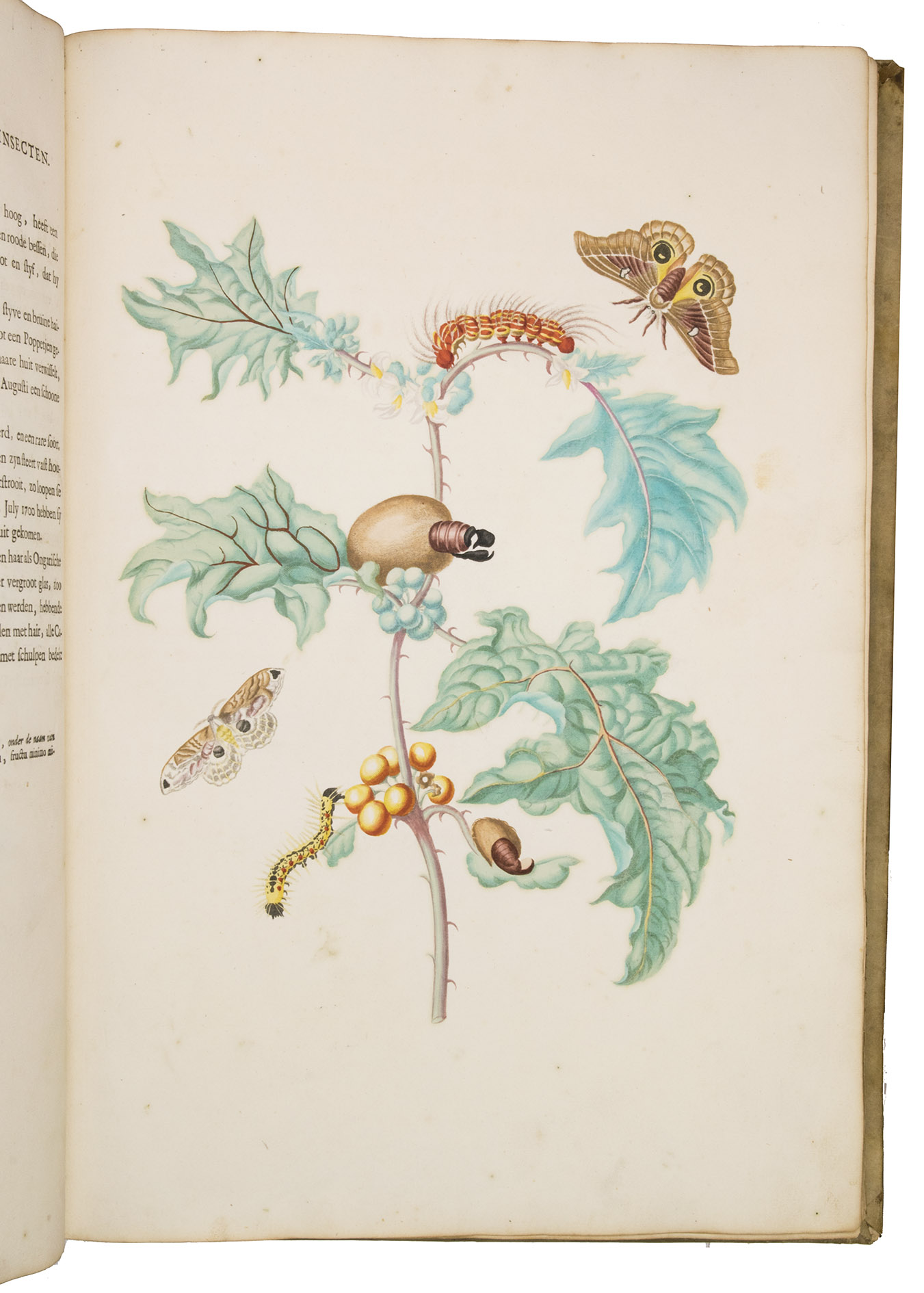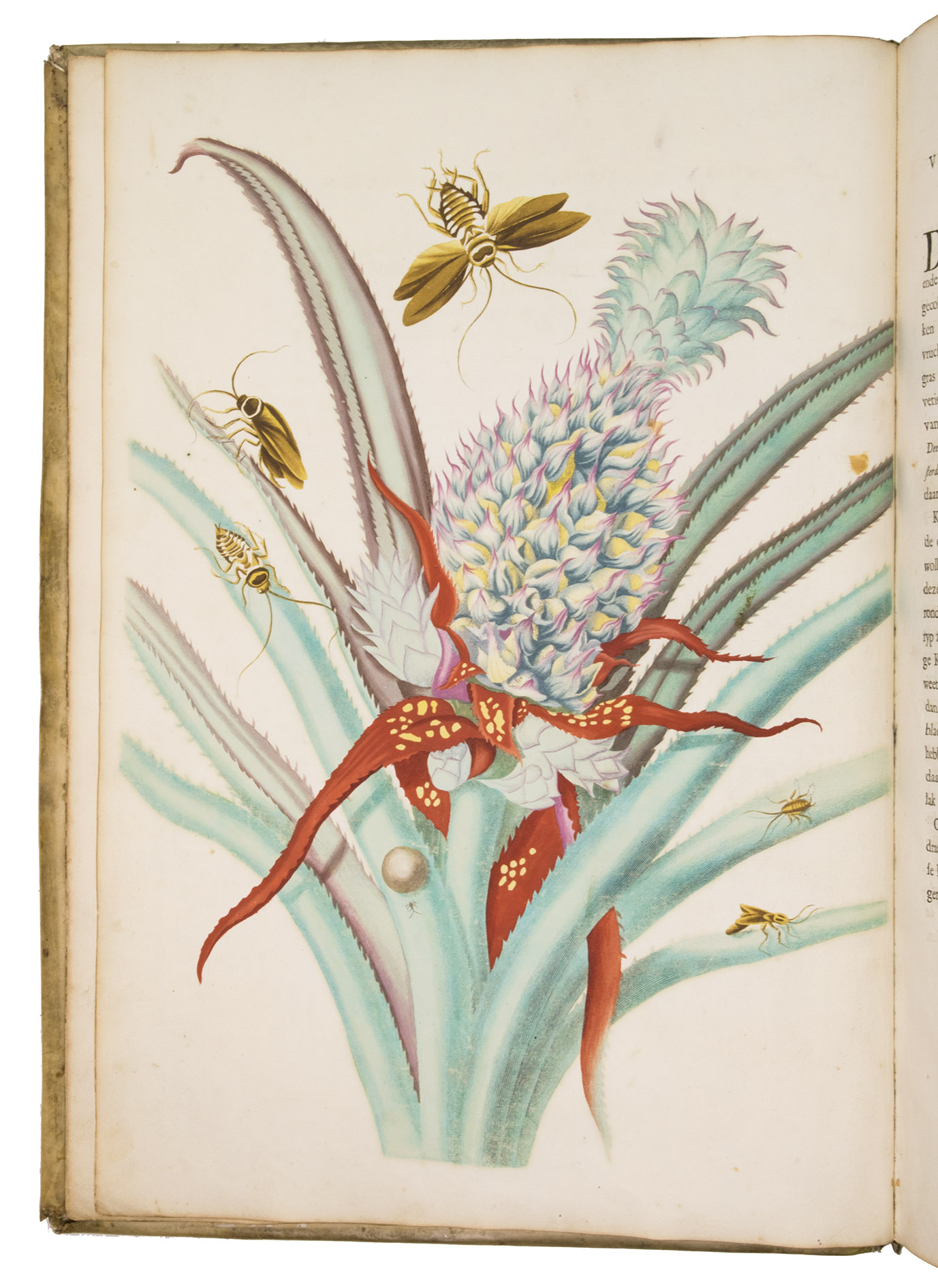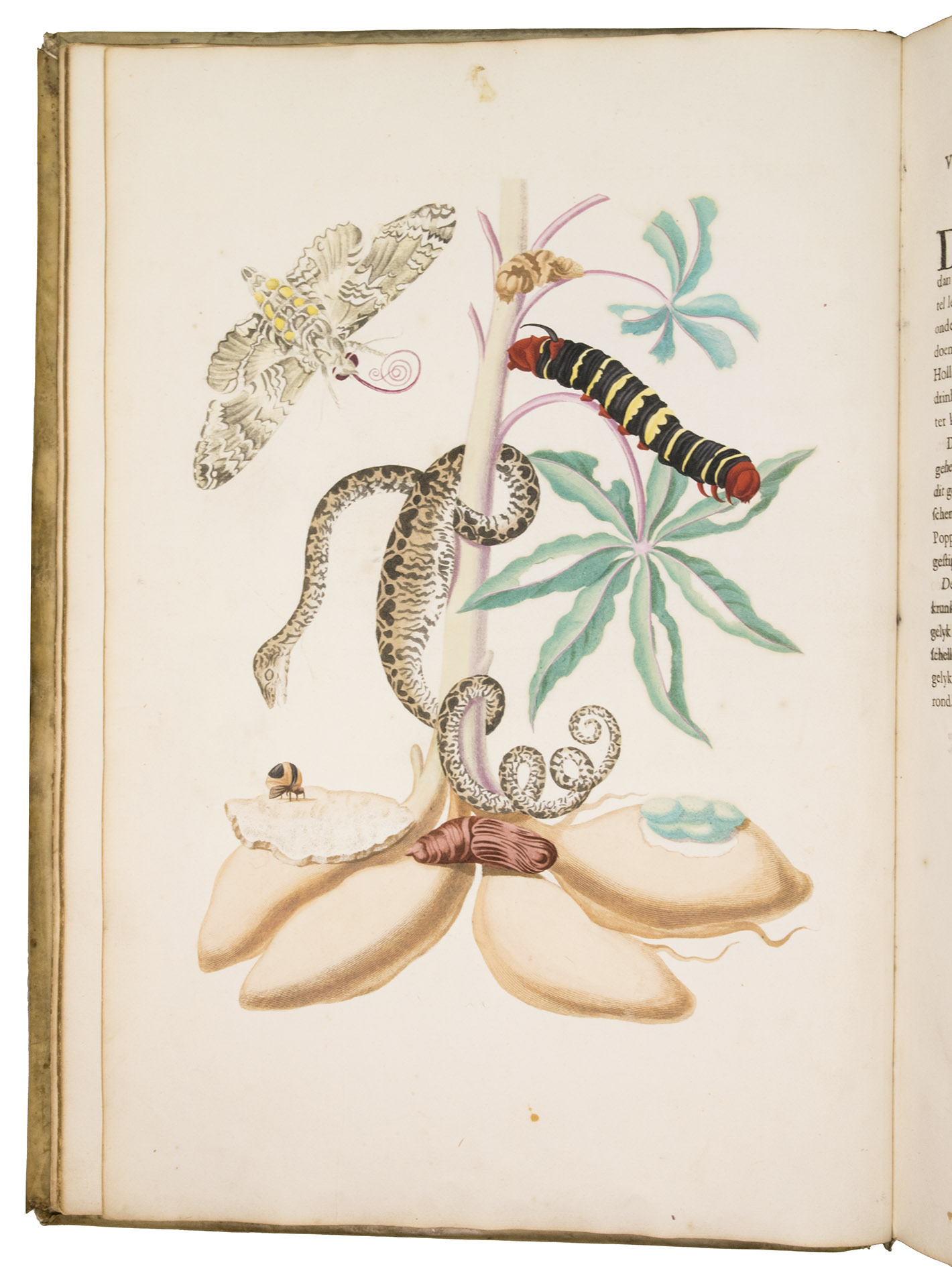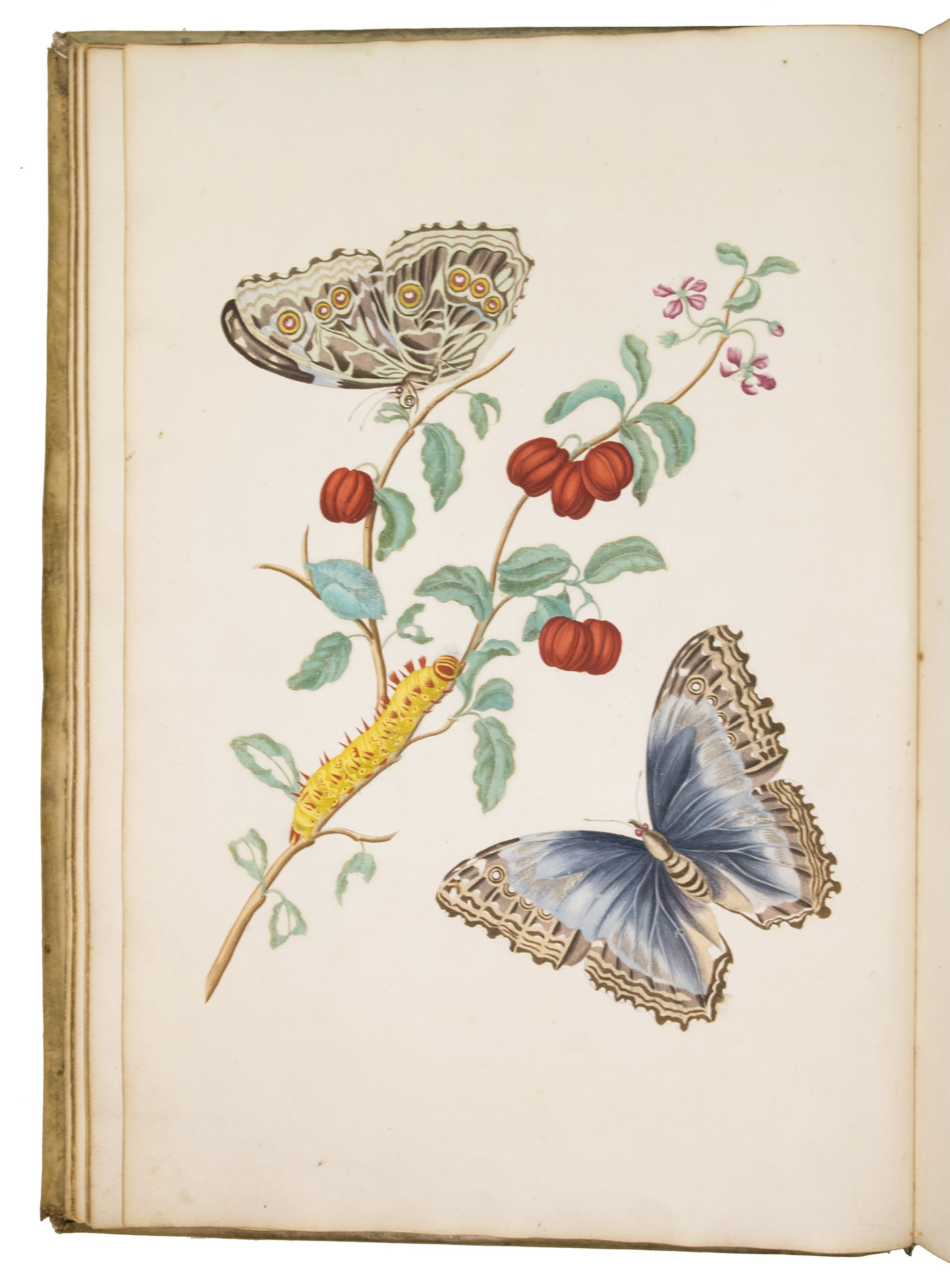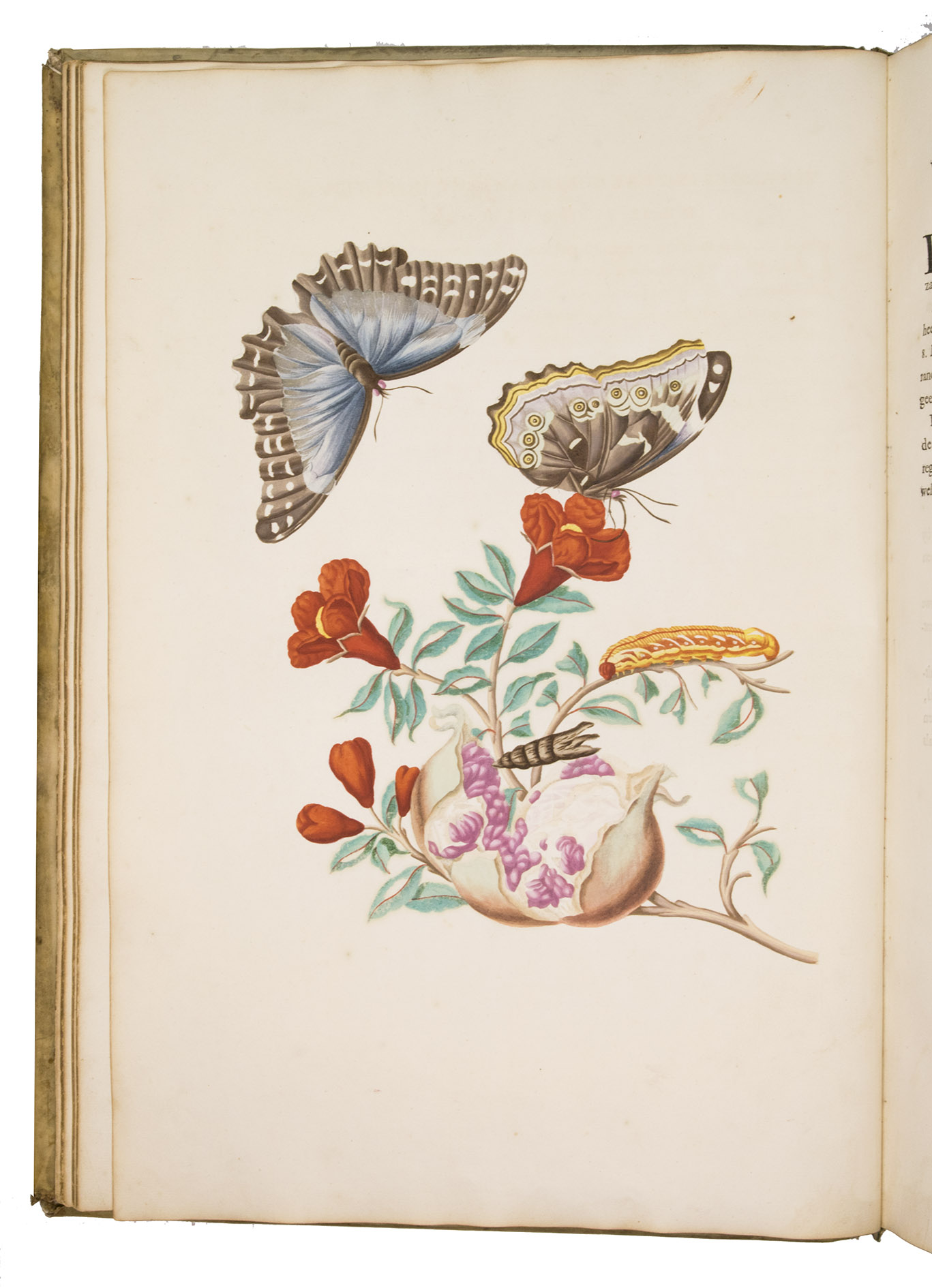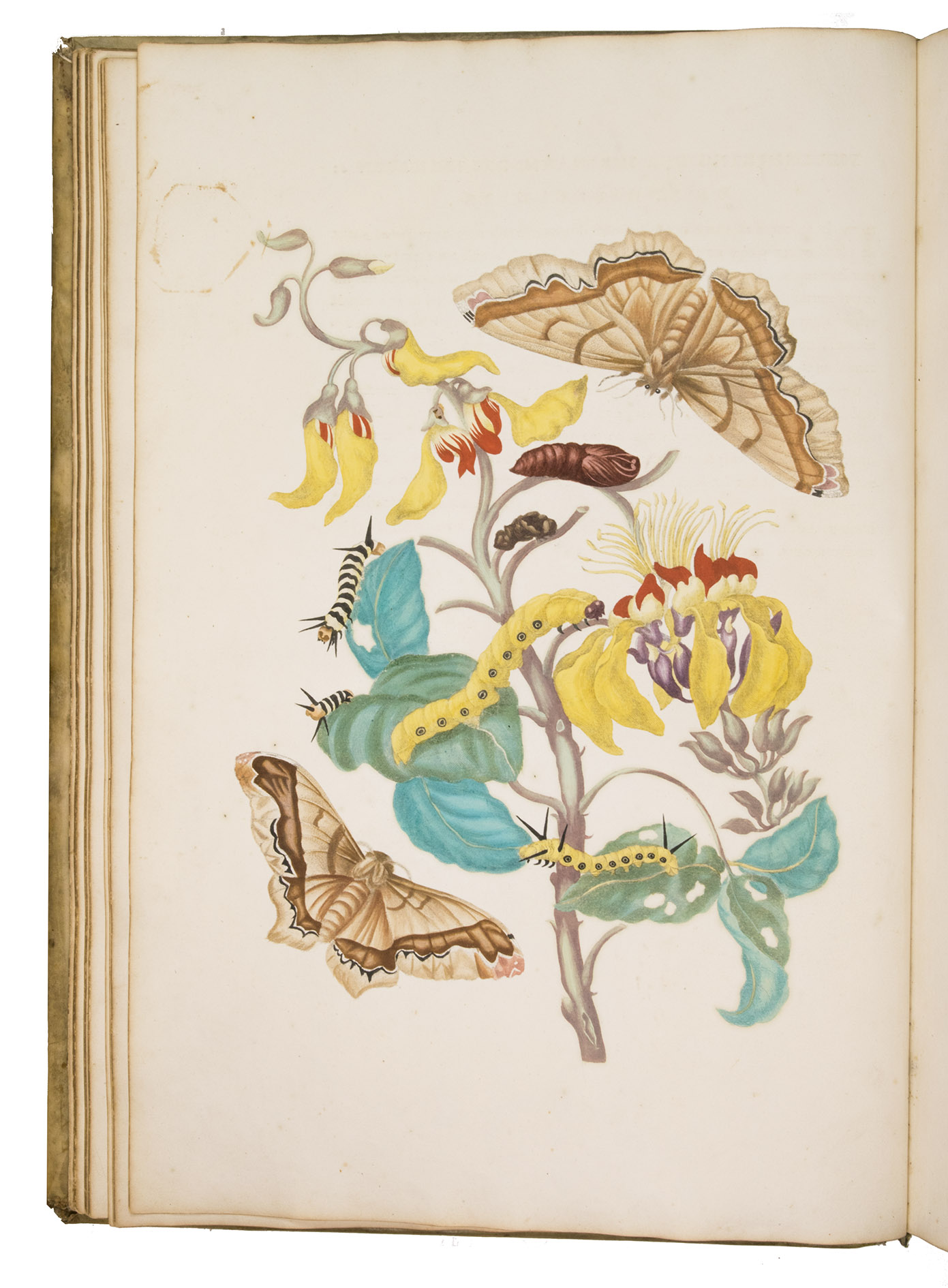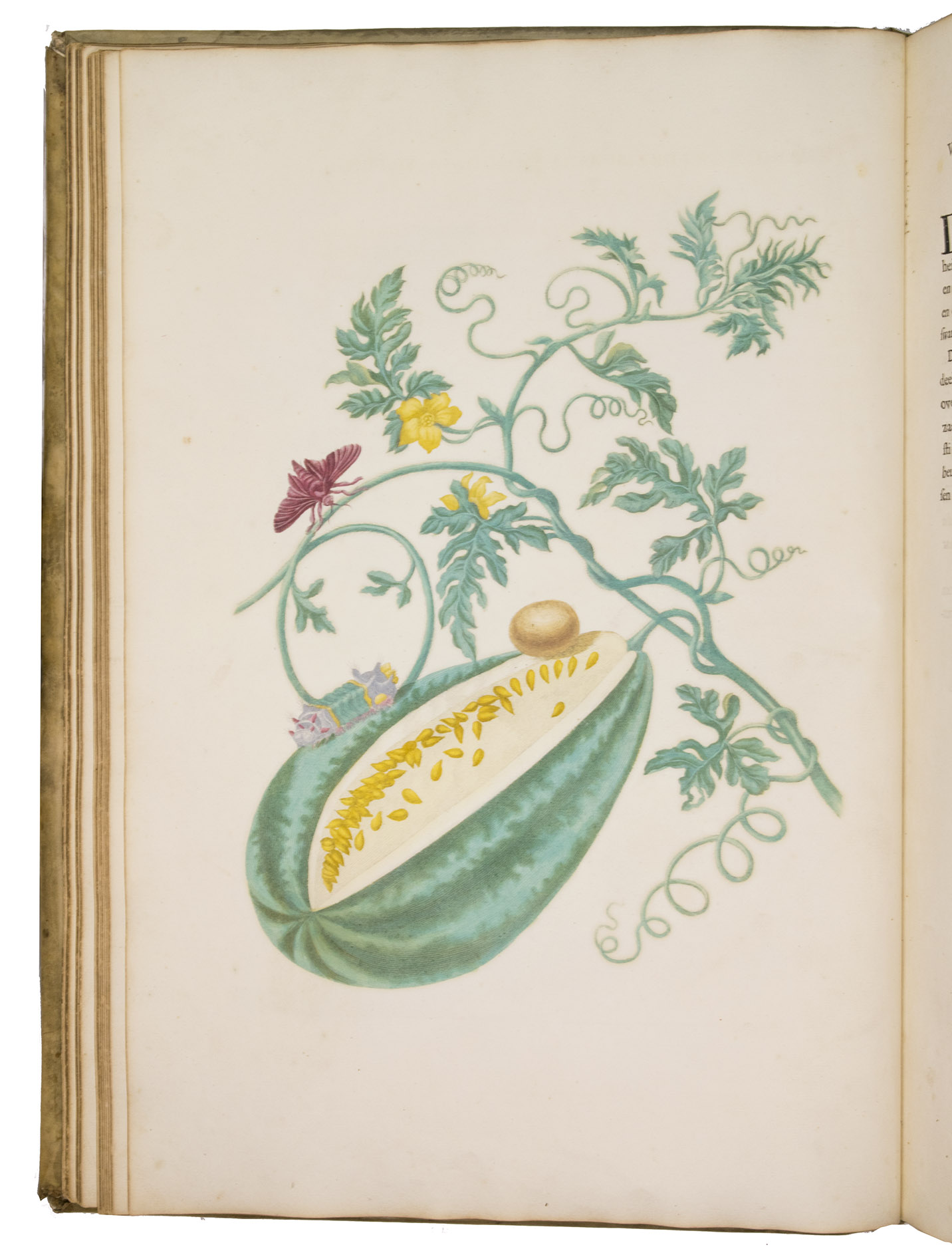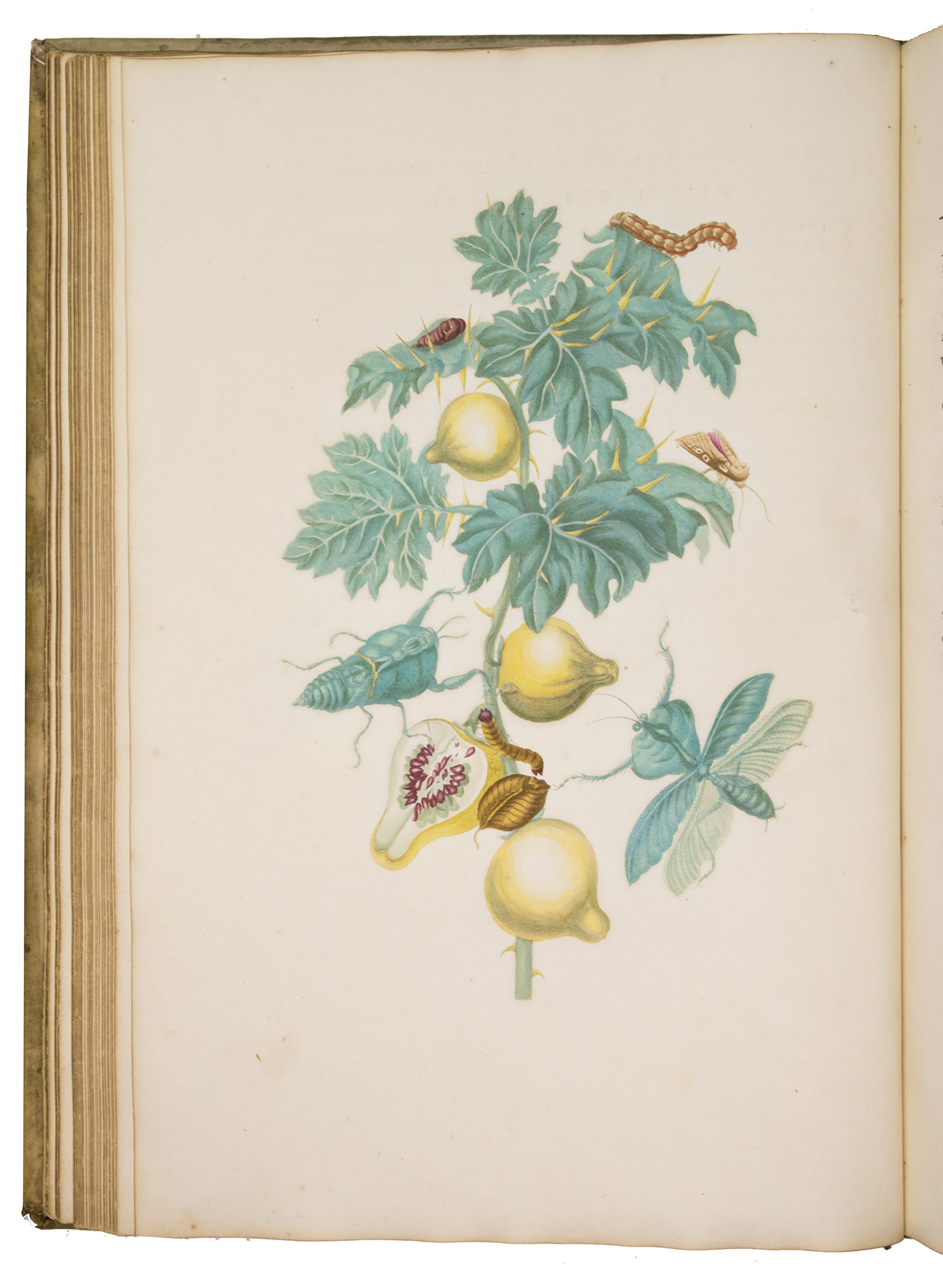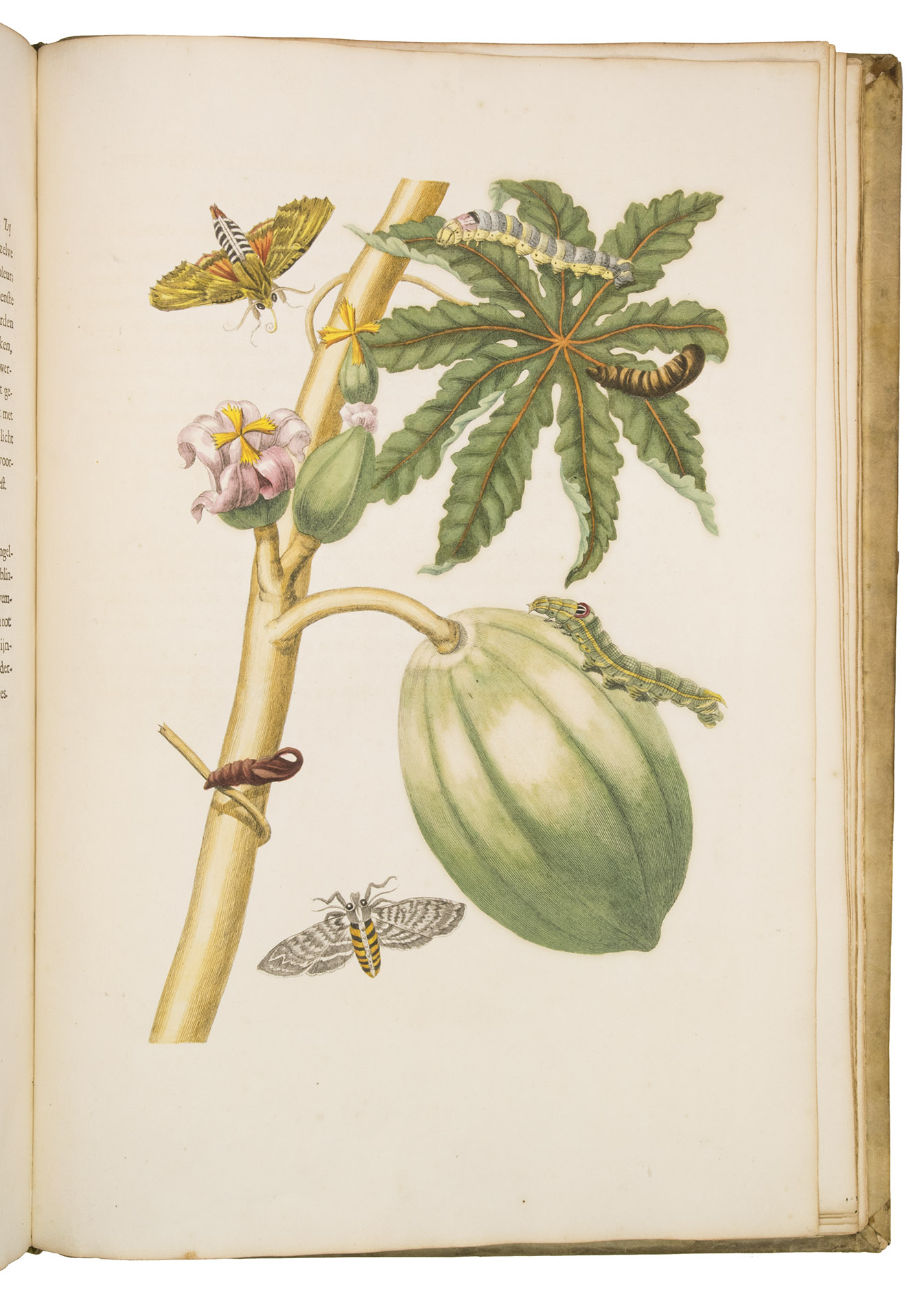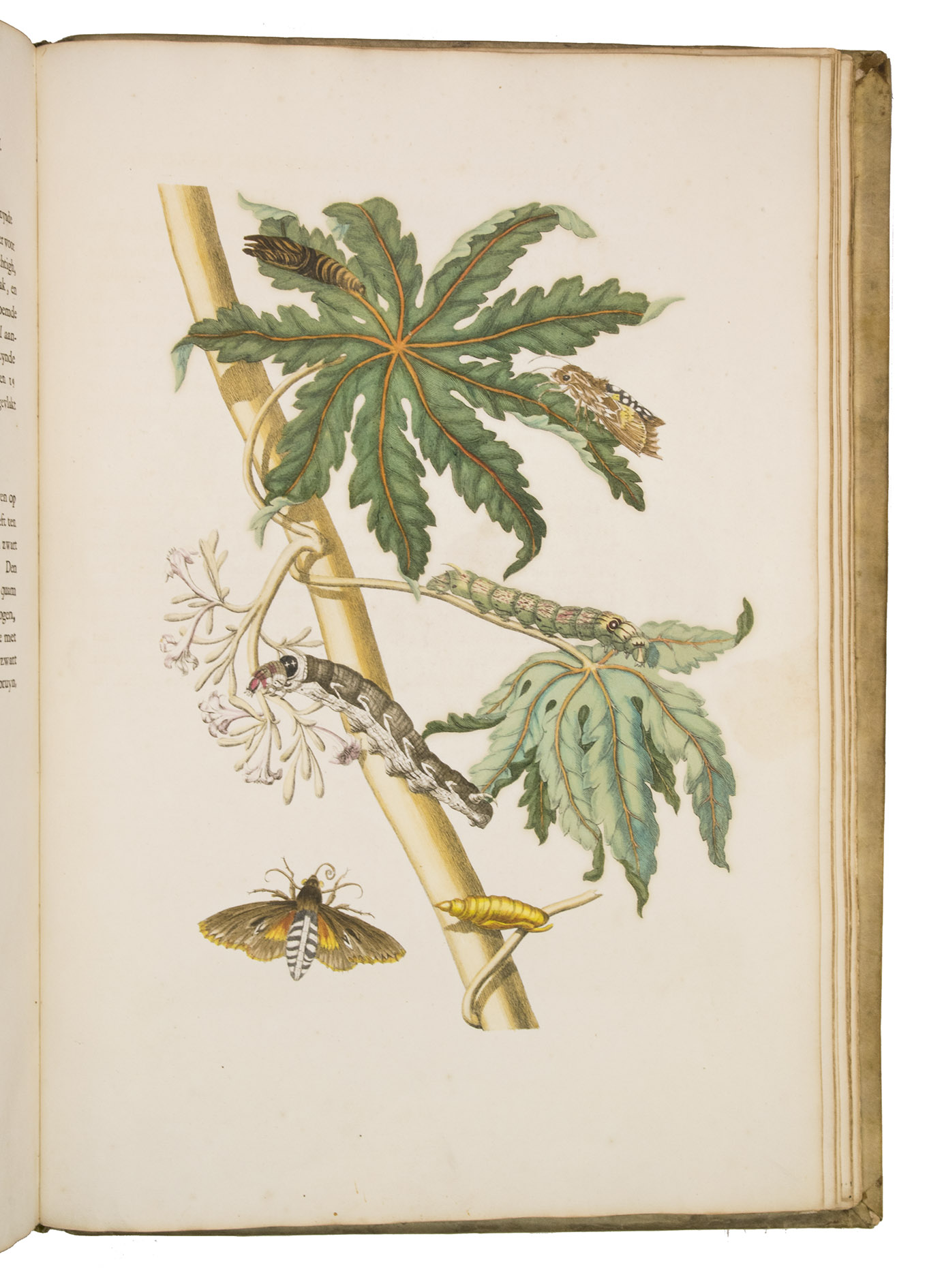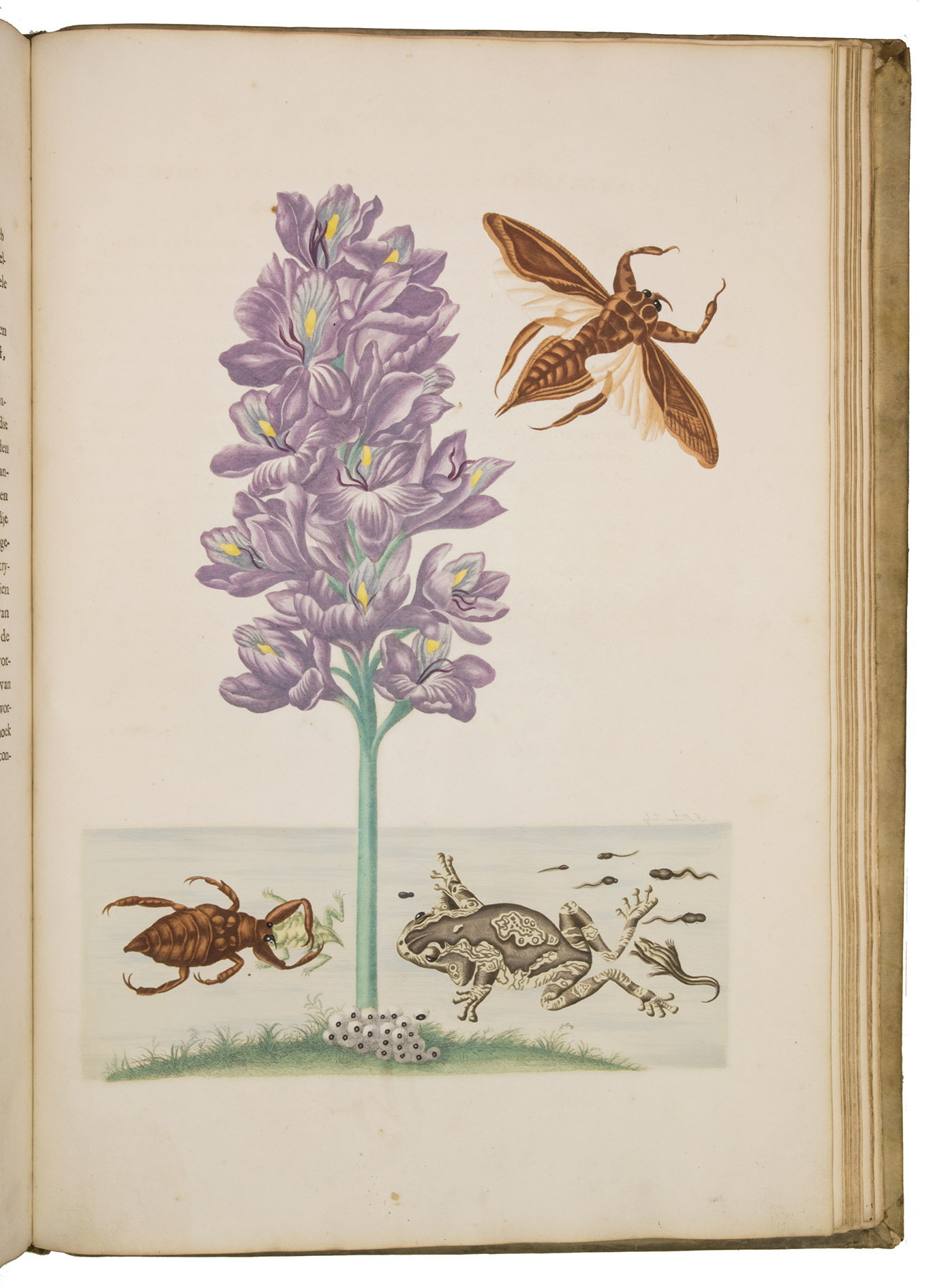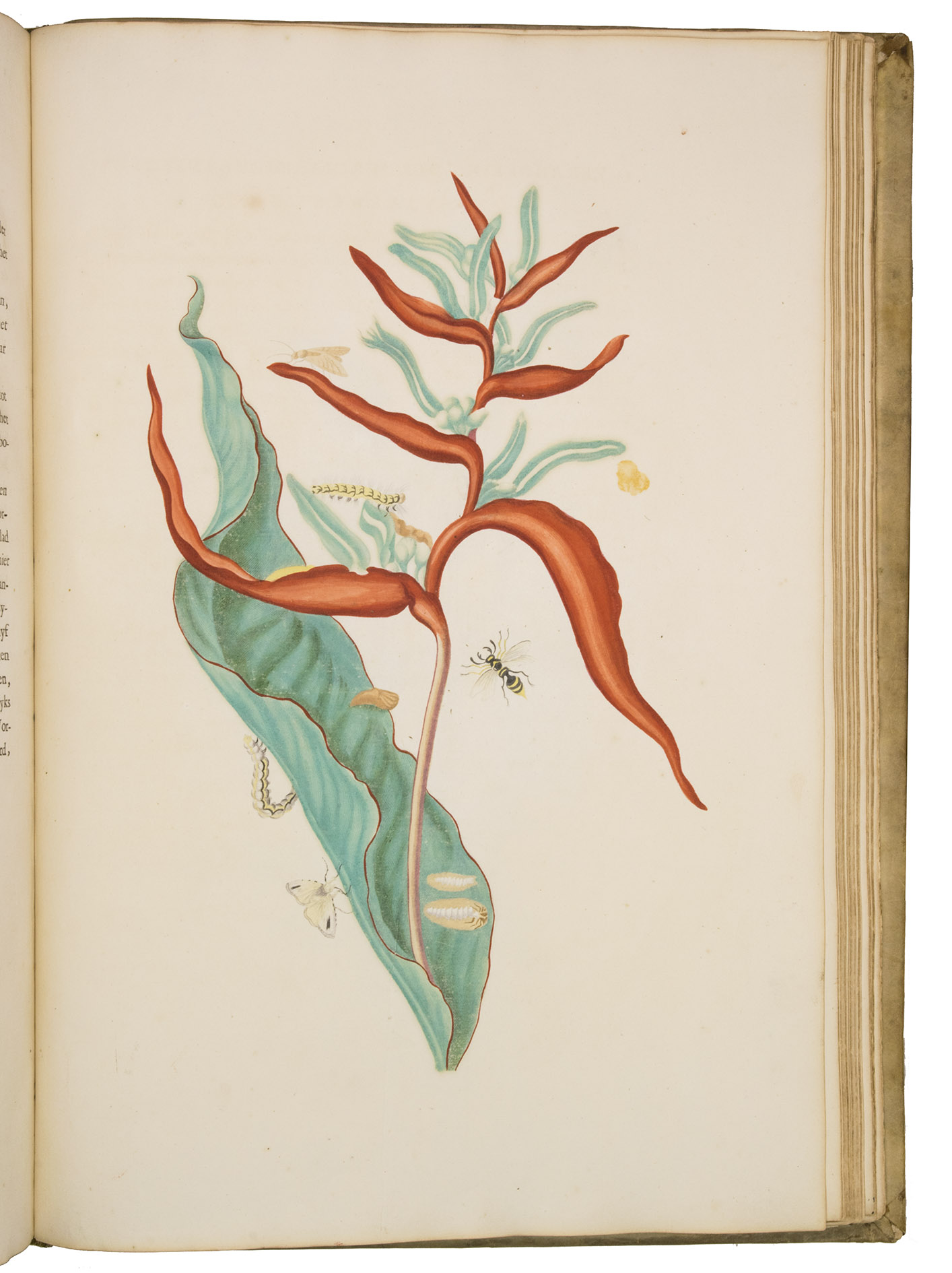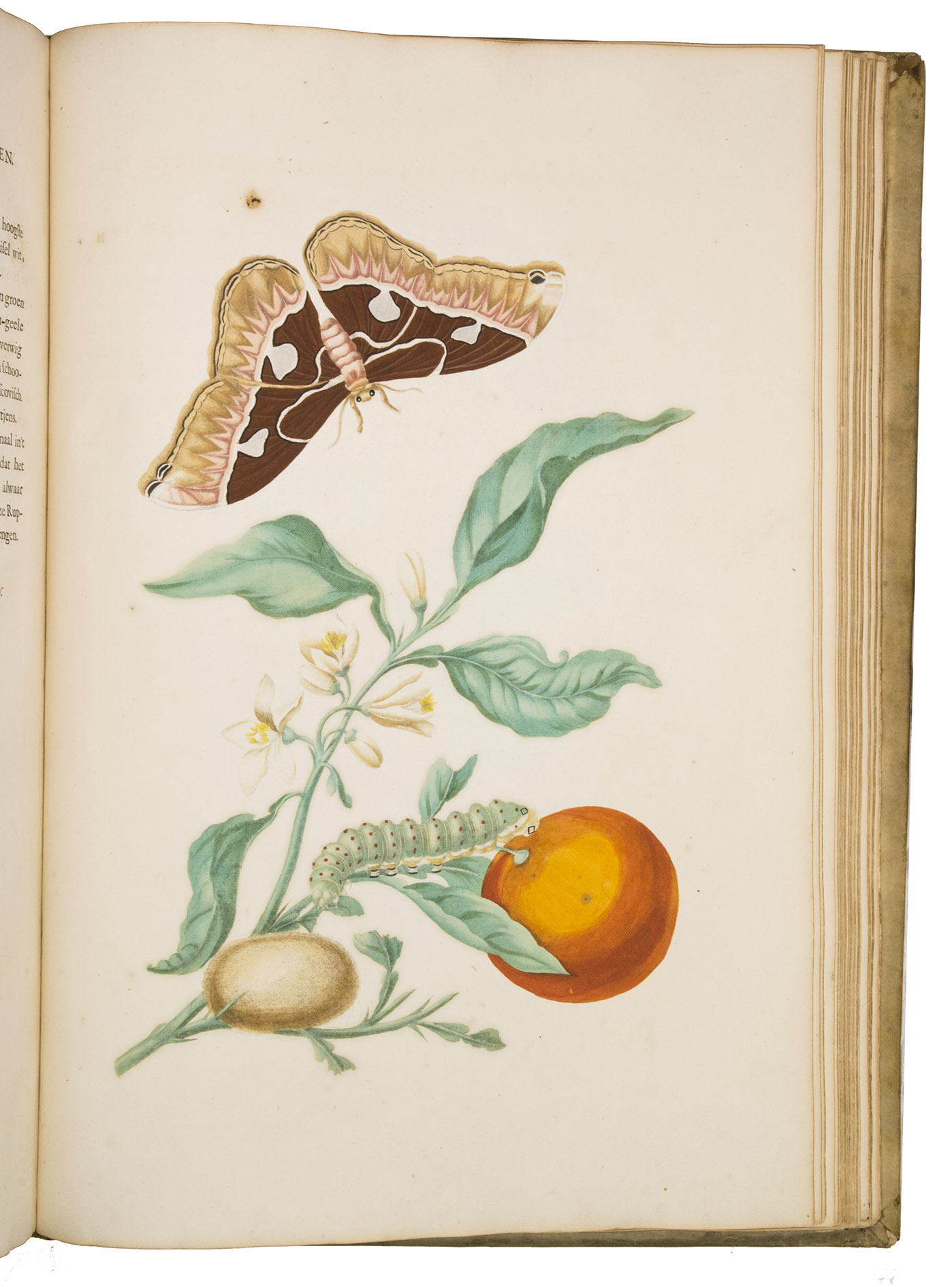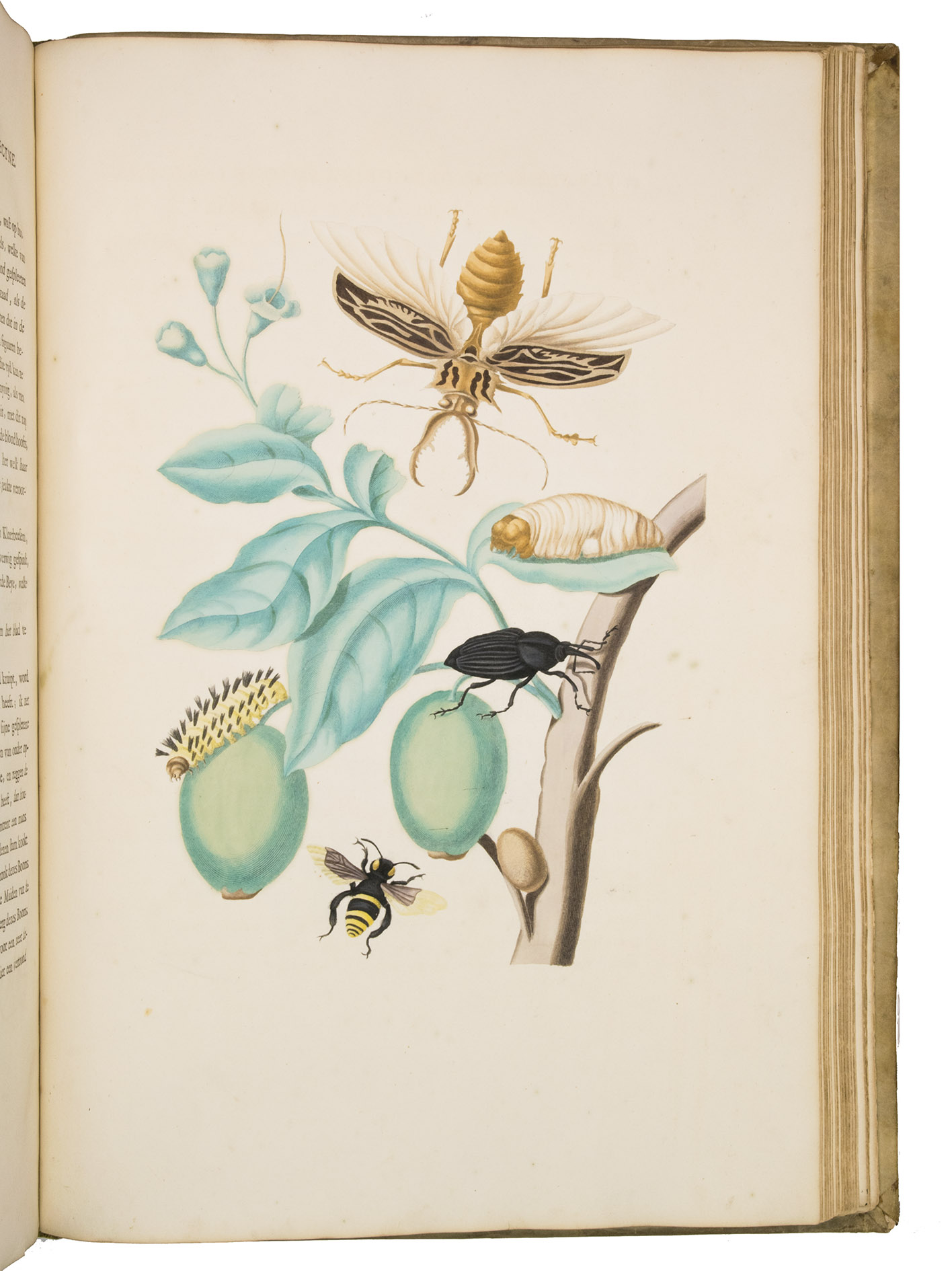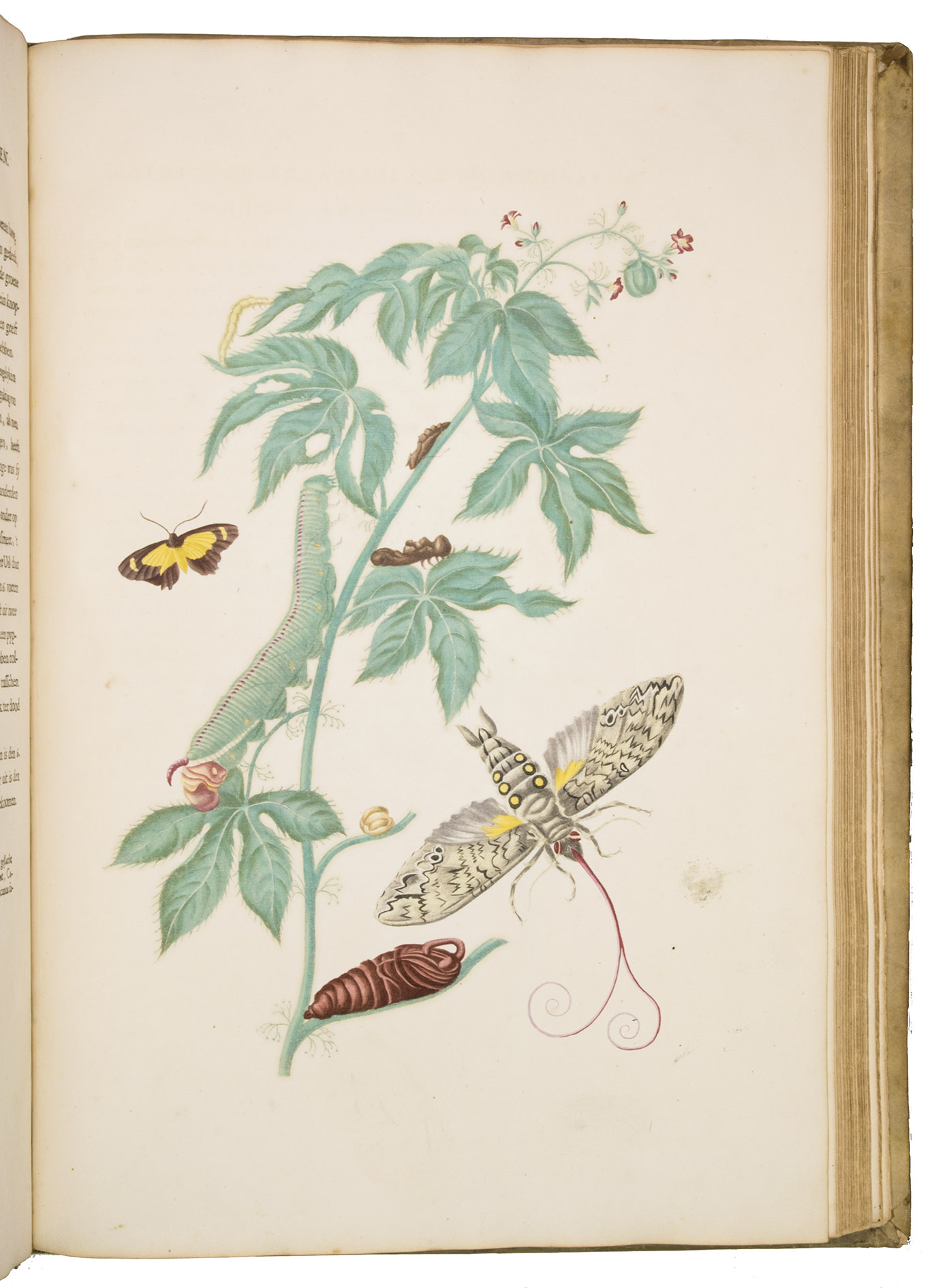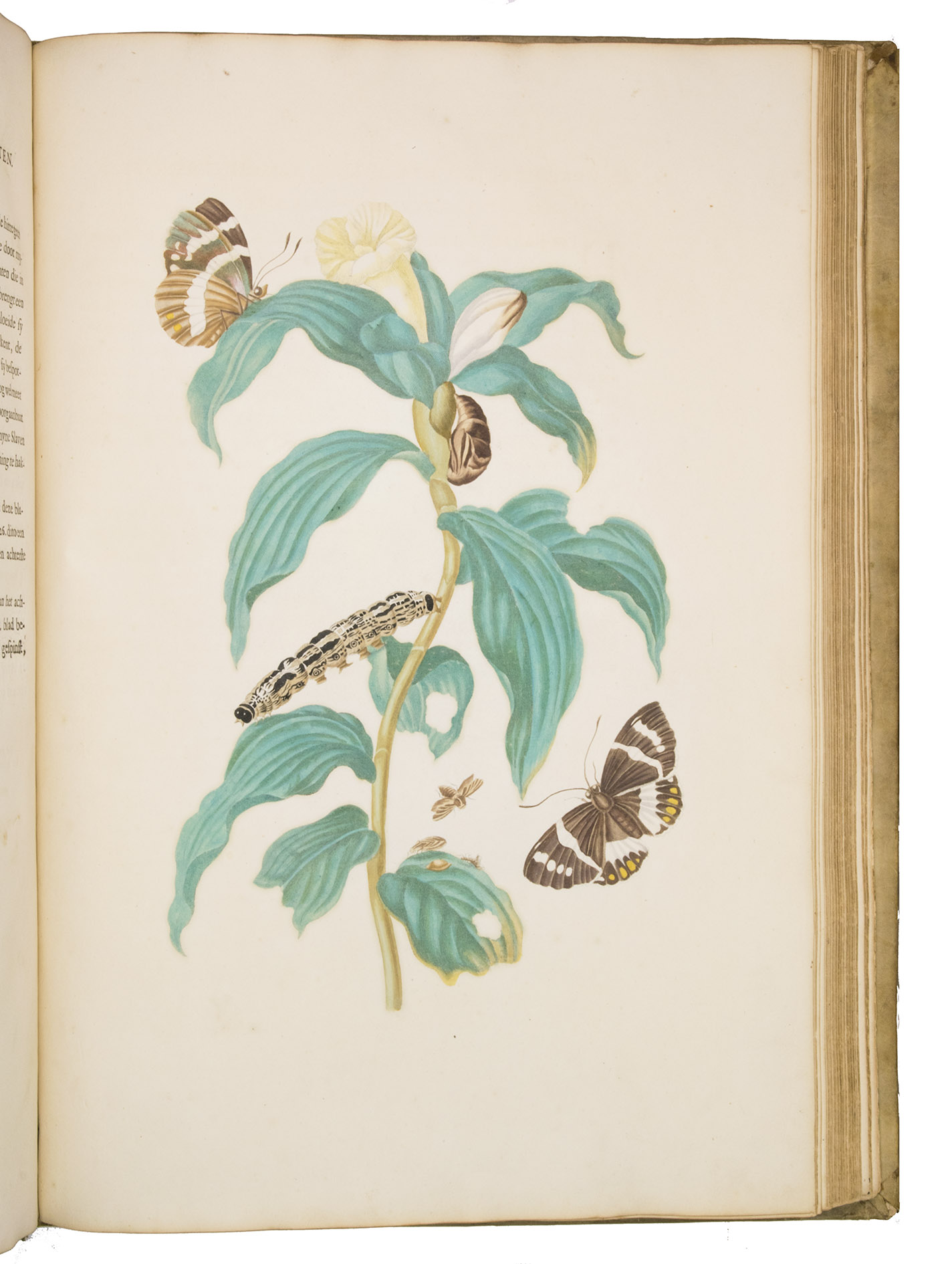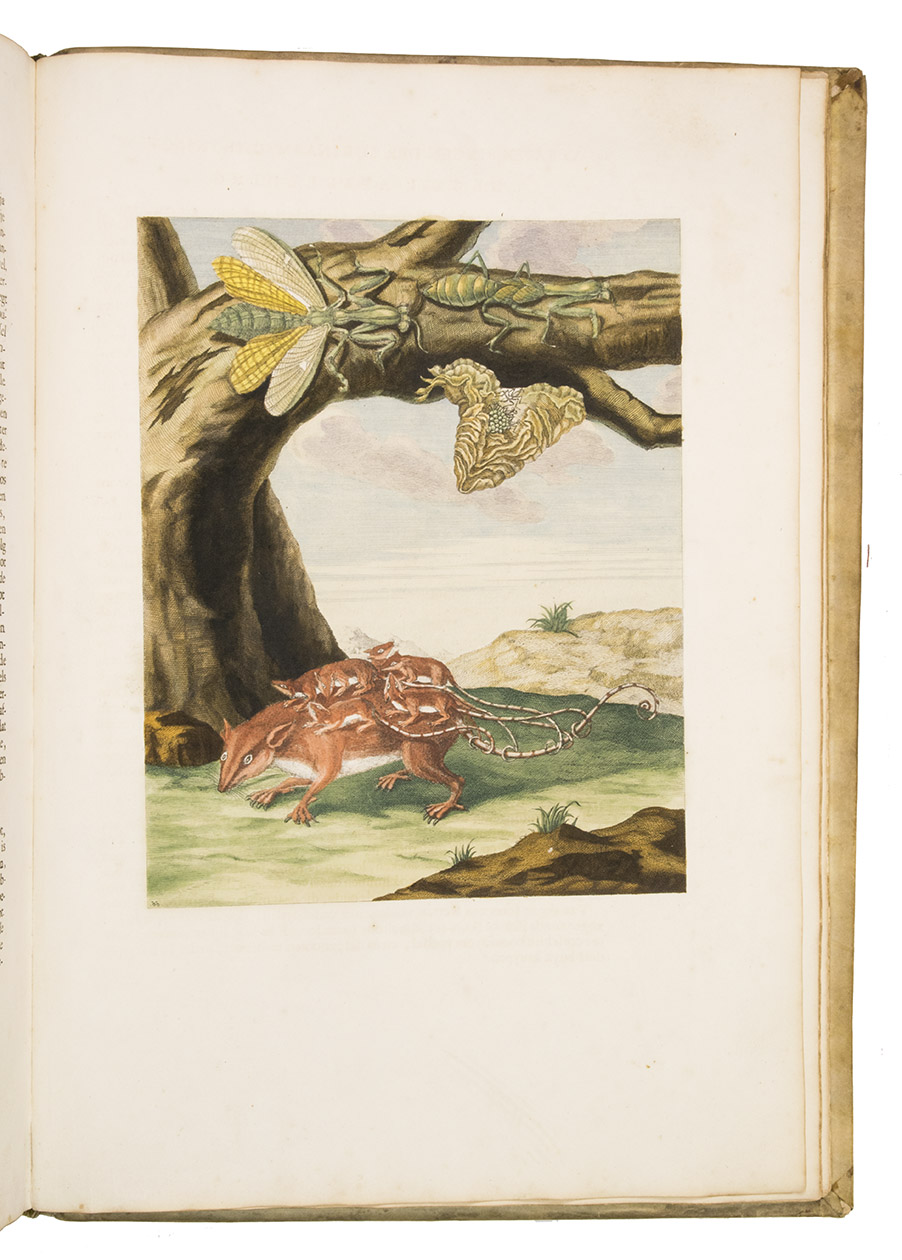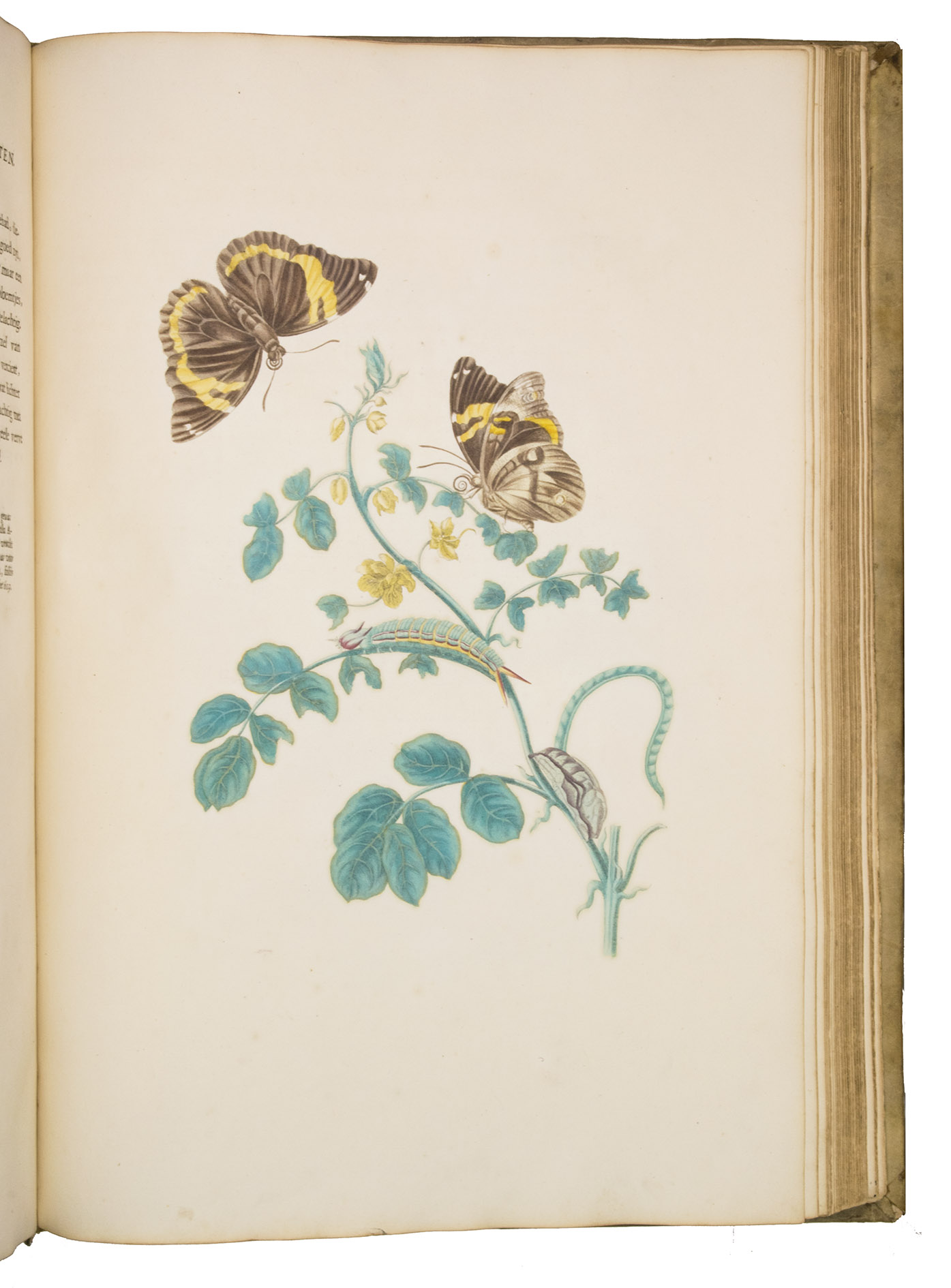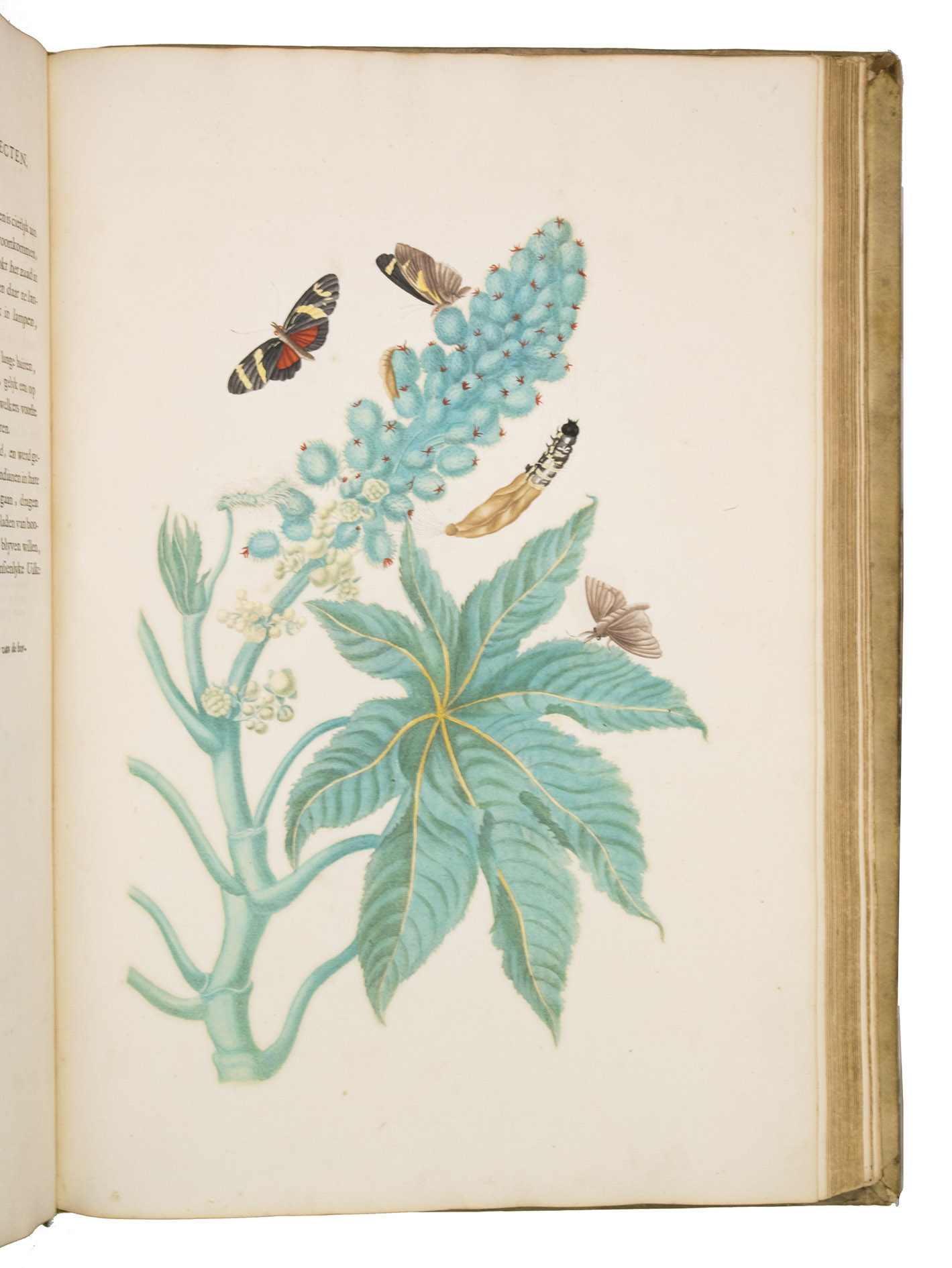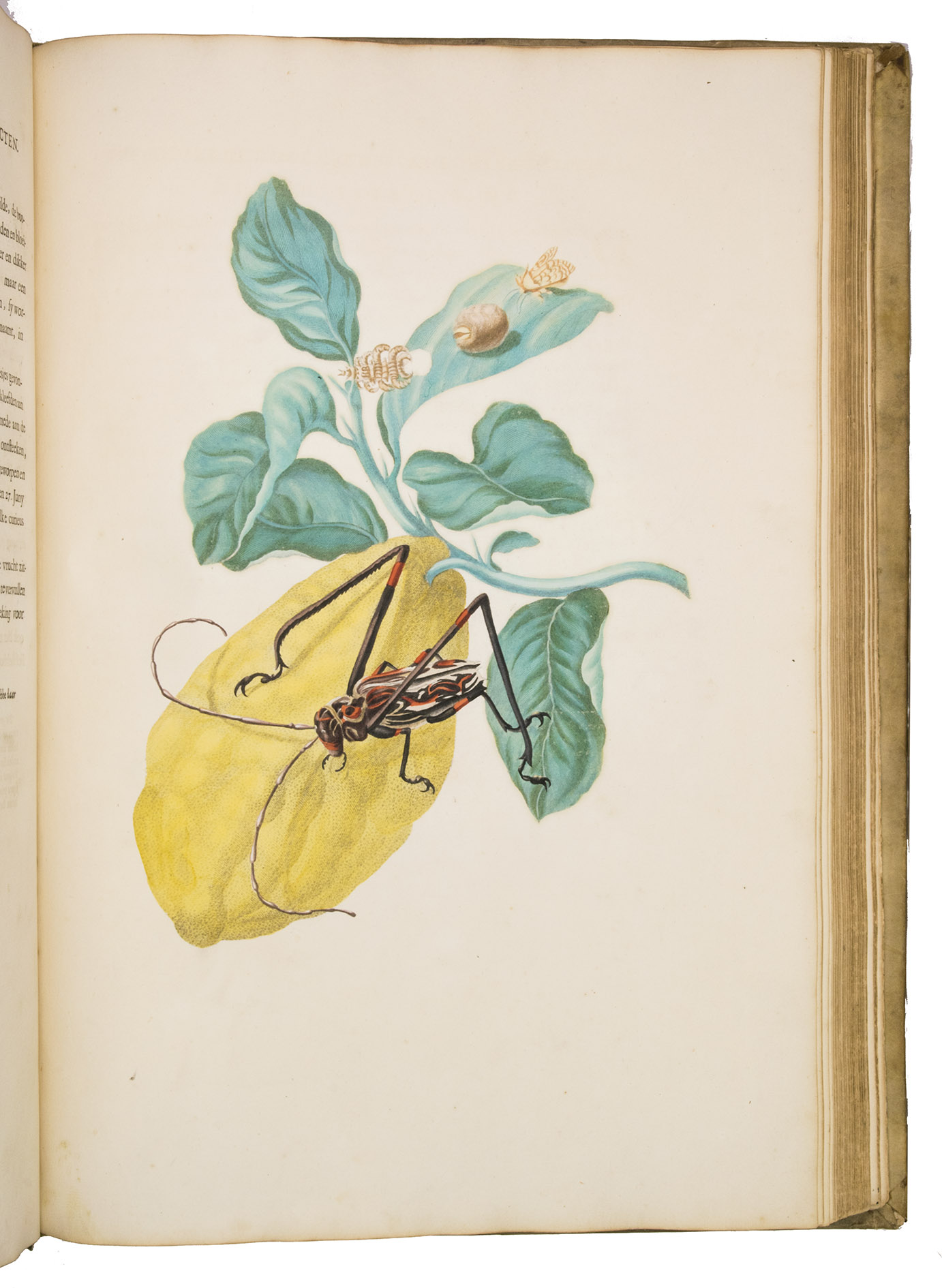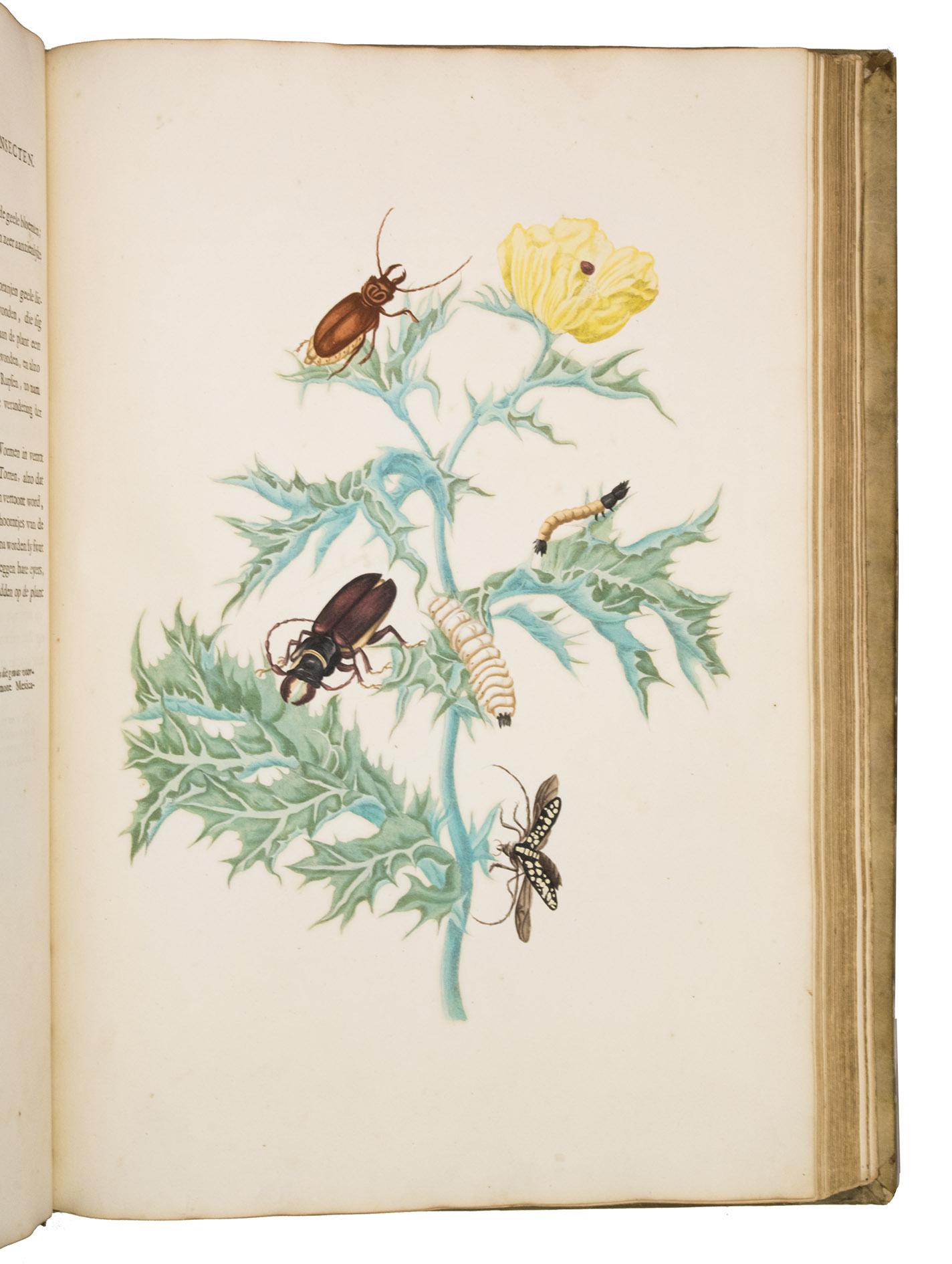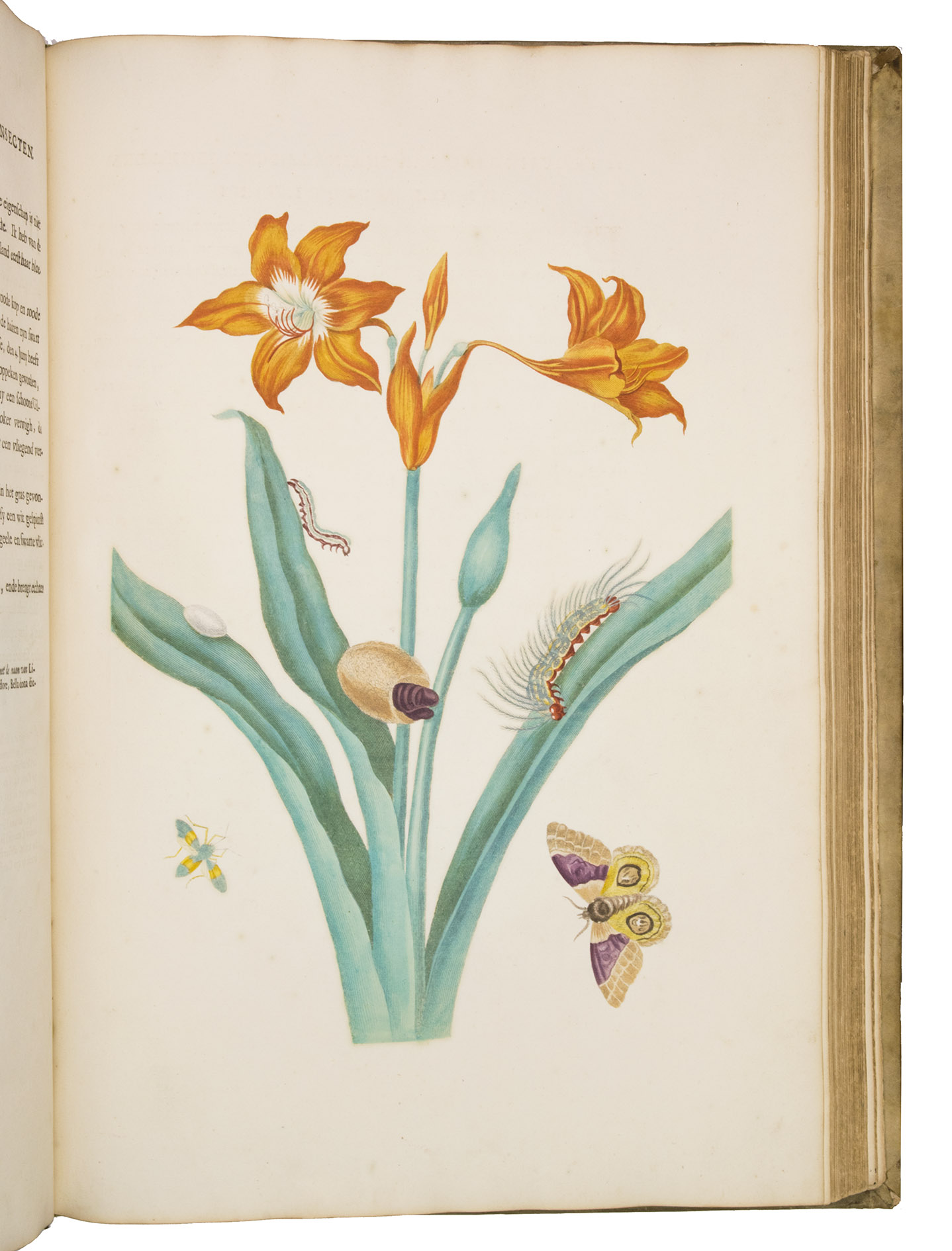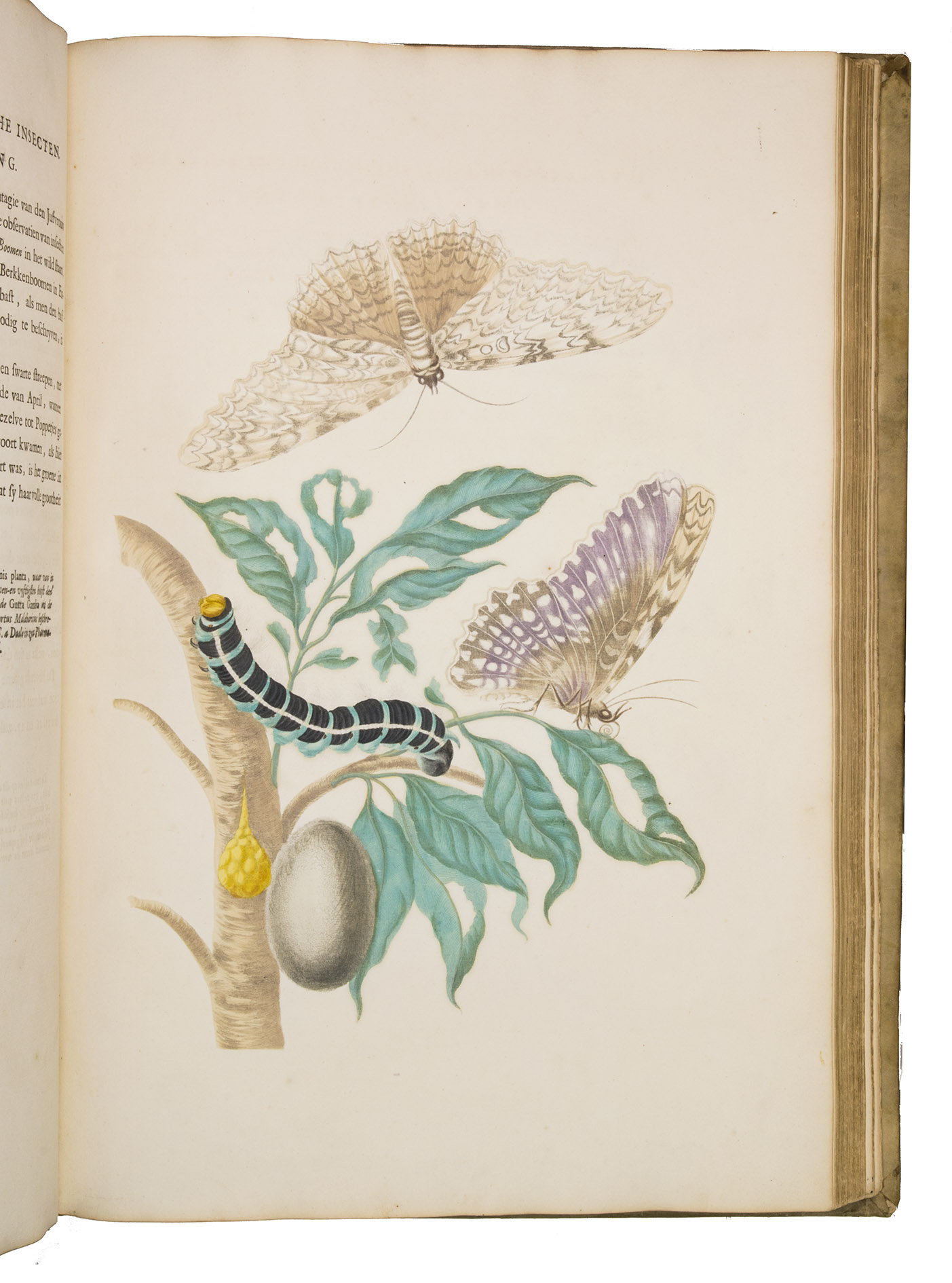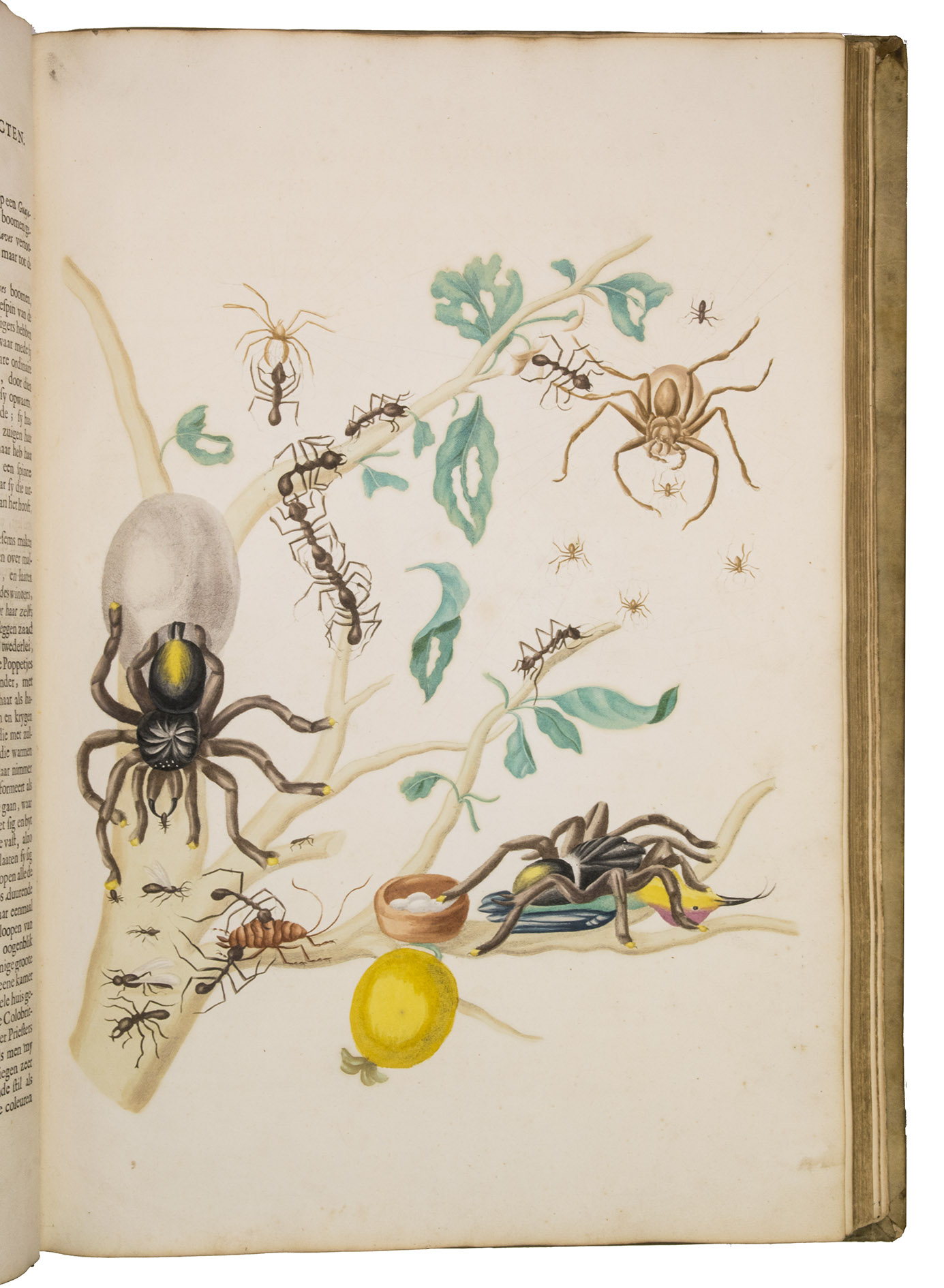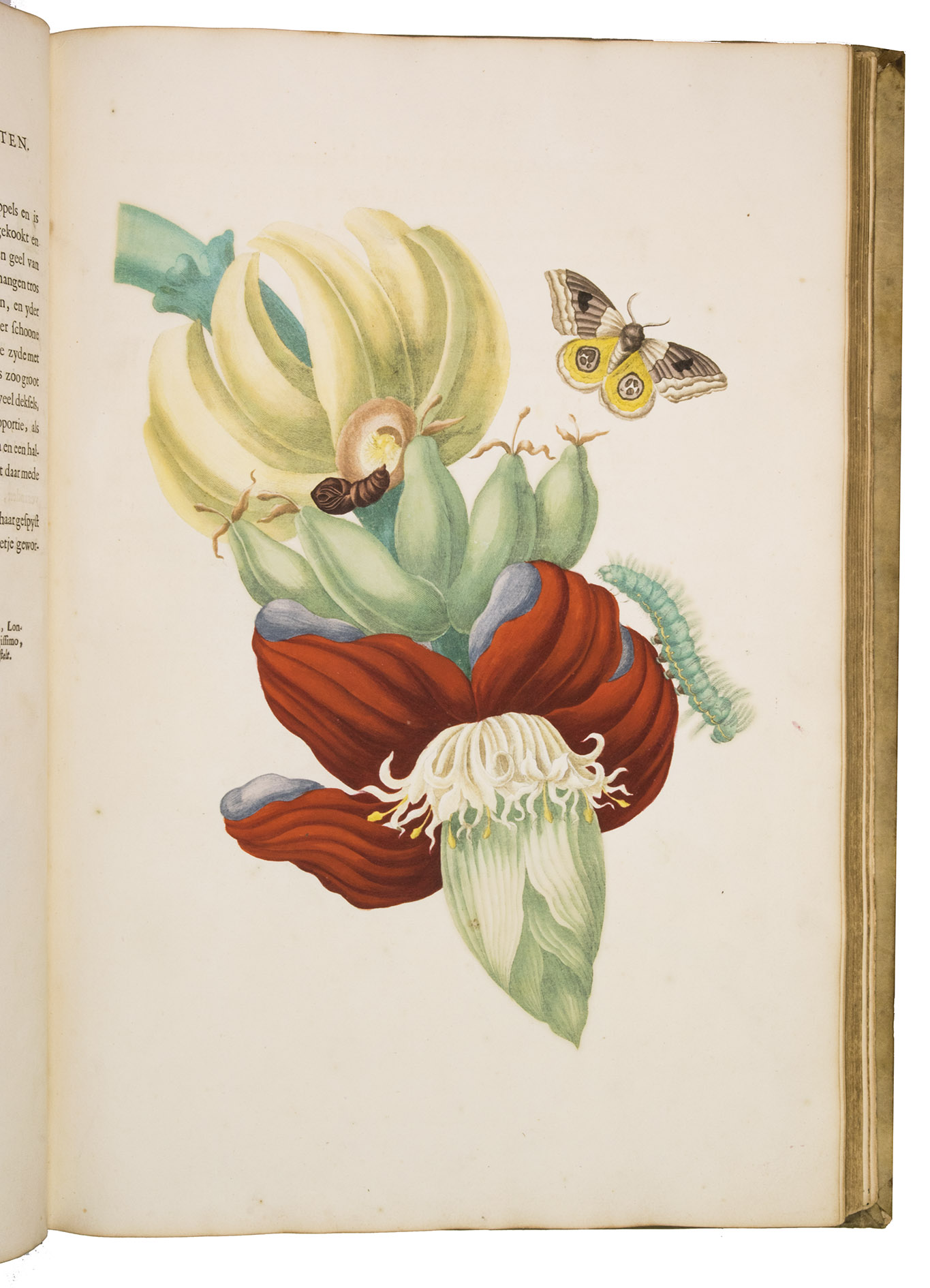MERIAN, Maria Sybilla.
Over de voortteeling en wonderbaerlyke veranderingen der Surinaemsche insecten ...
Amsterdam, Johannes van Oosterwyk, 1719. Imperial folio (53 x 38 cm). With an engraved frontispiece, drawn and engraved by Frederik Ottens (representing the author in her youth seated at a table with flowers and insects, assisted by 6 putti, while a large decorated arch reveals a tropical landscape in the background with buildings and 2 men stand conversing while Merian, nearby on her knees, is catching a butterfly with a net), and 72 etched counterproofs, numbered I-LXXII in the facing letterpress descriptions (not numbered in the plates themselves). Further with Van Oosterwyks engraved device (a bearded man sitting on the forest floor playing a lyre, with motto, "vigilanter et quieté"), a large engraved headpiece above the dedication, incorporating the arms of the dedicatee, Balthazar Scott, 3 woodcut decorated initials (2 series) and a woodcut factotum. The frontispiece, publishers device and dedication headpiece and illustration plates coloured by contemporary hands, probably by Merians daughters. The frontispiece, title-page (lettering and the divice), and the dedication (both the arms and the lettering) highlighted in gold. Further with 4 woodcut decorated initials (3 series). Gold-tooled vellum (early 1800s), sewn on 8 supports, each board with a large arabesque centrepiece (15.5 x 12.5 cm) with flowers and foliage, with an empty central oval, 2 frames made from 2 different rolls (the inner 9 mm and the outer 10 mm, the latter edged inside with a sawtooth roll), the inner frame with a built-up cornerpiece inside and a crown (26 x 33 mm) outside each corner, the spine with each of the upper 4 and lower 4 compartments containing a built-up centrepiece and 4 cornerpieces, the larger central compartment with 3 lines of text reading up the spine, partly illegible, but probably reading "M S MERIAEN|VERANDERINGEN DER|INSECTEN" and across the head and foot a roll with crossed, dotted diagonal lines. With a built-up armorial centrepiece, apparently preserved from the books first binding in gold-tooled red goatskin morocco, on-laid on the front board near the centre of the fore-edge: a large cartouche (16 x 10.5 cm) with an oval centre (6 x 5 cm), with, around the oval inside the cartouche, floral and interlaced decorations, foliage and 5-pointed stars, and inside the oval the blind-tooled Cervantes coat of arms (37 x 26 mm: 2 stags - though here without antlers - the upper standing and the lower grazing, above "EX ANTIQUIS", with a gold-tooled bishops cross and hat, the hat with 6 + 6 tassels). Further with gilt edges, headbands in green and beige (around a double vellum strip). The work is kept in a modern, custom-made case (half red morocco and marbled paper sides, with the title lettered in gold on the spine). [8], 72 pp. plus frontispiece and 72 plates.
€ 500,000
Greatly expanded second edition of the magnificent crowning achievement of the lifelong work on insects and their illustration by Maria Sibylla Merian (1647-1717), with twelve plates added to those in the 1705 first edition, this copy with all 72 plates in hand-coloured counter-proofs, probably coloured by Merians daughters. Thomas Mouffet had proposed around 1600 that certain butterflies went through the stages of egg, caterpillar, pupa and butterfly, but when Merian began studying insects in the 1660s and 1670s the notion that insects came to life by spontaneous generation still prevailed. Her extraordinarily detailed observations illuminated the metamorphosis of all insects in far greater breadth and depth than any of her predecessors, and the quality of her drawings and hand-coloured etchings was much higher. Her study of caterpillars, published in 1679, is now recognized as a ground-breaking book, but her crowning achievement is the present book of her studies of insects in Suriname, where she began work in 1699, with its magnificent plates, whose largest images measure 47 by 31 cm. Its first edition in 1705 brought her great success as a commercial publisher of natural history prints, and a small circle of naturalists appreciated and cited her work, but she remained little-known until the late twentieth century. In the last quarter century, she seems to have eclipsed the fame of her father, Matthäus Merian, one of the most celebrated engravers of the 17th century (her Wikipedia page is four times as long as his!).
The first 60 plates had appeared in the first edition, Metamorphosis insectorum Surinamensium, ..., Amsterdam, the author and Gerard Valck, [1705], but the last 12 plates were newly made for the present edition. Work probably began before Merians death in 1717, two years before publication. We compared the present copy of the 1719 edition with two copies of the 1705 edition: all illustrations in the present copy of the 1719 edition are mirror images of those in the Dutch Royal Librarys copy of the 1705 edition, except for plate VIII, and in the Smithsonian copy in the Biodiversity Heritage Library, all plates we checked show ours to be mirror images of those in 1705 (including VIII: perhaps it was replaced in the Royal Library copy). The plates in 1719 are not mirror-image copies but counterproofs, where the copper plate was first printed onto one paper leaf and while it was still wet a blank paper leaf was laid on it and they were put through the rolling press together, transferring the printed image to the blank leaf to make the present prints, which were then coloured by hand, very likely by Merians daughters. Merian introduced this process in her caterpillar books in 1679 and 1683 (Reitsma, p. 165) and Stijnman & Savage note that she offered hand-coloured counterproofs of her prints at a "much higher price". They required more work to produce, but they looked more like original drawings in the subtler quality of line, usually in the orientation (often reversed when engraved) and showed no impression of the image or of the edge of the copper plate. Only two plates include engraved text: "P Sluyter sculp" in plate XLIV and "88" in plate LXVIII. In the present copy both appear in mirror image, confirming that they are counterproofs. The Merians and Van Oosterwyk probably produced fewer copies with counterproofs than with normal hand-coloured engravings, but the higher cost meant that many went to the libraries of royalty, noblity and wealthy merchant families, where they might stand a better chance to survive.
The lettering stamped on the spine is 18th-century in style, but could easily have remained in use in the early 19th-century, but it would have looked increasingly out of date after 1820.
With a small smudge in the colouring of the snake in plate 46 and otherwise very slightly and very lightly foxed throughout. The binding is somewhat rubbed and browned. Overall in very good condition. Alden and Landis 719.110; Ella Reitsma, Maria Sibylla Merian & dochters (2008), pp. 204-206 & passim; Nissen BBI 1341; STCN 240160975 (7 copies incl. at least 3 incomplete).
Related Subjects:
